music art film review - REDEFINE magazine
Psychoactive Soundscapes: The Trippiest Psychedelic Albums of 2014
![Psychoactive-Soundscapes_2014]()
The idea that the multiverse is more akin to an art project than a science experiment (or an art experiment, if you're so inclined) is one of those Occult themes that typically gets dismissed by both overly scientific and religious types alike, even though it quite inarguably resonates now more than ever. One of the stranger aspects of human psychology that we essentially avoid touching in typical academic or spiritual discourse involves the fact that your average person now consumes roughly a hundred thousand times more art in a given year than they did even a mere century ago. We used to rely on mediums like galleries, plays, symphonies, and libraries to dispense our art, most of which weren't super accessible to people who weren't wealthy or close to an urban center. Now the fact that the internet and cable television beam recreational distractions into our homes 24/7 seems almost like a trivial afterthought.
![]() You can debate the quality of what in my mind are crappy creative endeavors like staged reality television, but you can't deny the fact that even TV commercials are getting increasingly surreal. More to the point: even the most logically wired hard-nosed materialist probably spends most of his time working a boring job while fantasizing about catching up on whatever show he's been neglecting on Netflix the second he has a free minute to relax (or staring at Facebook; friend me). So why is that? Why is it that we're increasingly and quite unconsciously abandoning the boring confines of the material world in favor of immersive fantasy realms? Why do our lives now involve things like rock concerts, marathon TV binges, video game addiction, and movie star crushes? Why do religious people continually oppose the evolution of these mediums? Why do scientists often view the world from the creepy lens of unconscious matter while spending their free time meticulously planning outfits for the next Comicon?
You can debate the quality of what in my mind are crappy creative endeavors like staged reality television, but you can't deny the fact that even TV commercials are getting increasingly surreal. More to the point: even the most logically wired hard-nosed materialist probably spends most of his time working a boring job while fantasizing about catching up on whatever show he's been neglecting on Netflix the second he has a free minute to relax (or staring at Facebook; friend me). So why is that? Why is it that we're increasingly and quite unconsciously abandoning the boring confines of the material world in favor of immersive fantasy realms? Why do our lives now involve things like rock concerts, marathon TV binges, video game addiction, and movie star crushes? Why do religious people continually oppose the evolution of these mediums? Why do scientists often view the world from the creepy lens of unconscious matter while spending their free time meticulously planning outfits for the next Comicon?
When you look at the universe as an art experiment, all of these things begin to fall into place. Art was the purpose all along. You can gawk at the horrors of the modern world in abject disgust, but what you can't deny is that it IS freaking entertaining. It's great art, pure and simple. Unpredictable. Mystifying. Bizarre. Never a dull fucking moment.
Earlier this year, I read the piece Carl Sagan penned in defense of marijuana and was sort of shocked at his admission that he didn't truly understand art until he started getting high. And that would be the significance of things like psychedelic drugs. They have the ability to place even non-creative types in the surrealist headspaces of the higher realms, to help them understand the hyper-liminal states of consciousness associated with creation itself. Of course, I'm an a musician as well as an admitted music geek, and debating what makes an album truly psychedelic is a discussion that can go on forever and hints at the subjective nature of reality itself (another topic we all love to avoid).
To clear the air, all of these albums were obviously at least partially inspired by things like psilocybin, LSD, and weed, regardless of genre. For the first time this year, I actually included the signifier of "recreational" or "ritualistic" with hallucinogens, and when relating to albums, they can be used in either capacity. I personally use them for both. A recreational album would be one that you're going to throw on while taking bong rips and relaxing. A ritualistic one might be something you'd use to calculatedly come into contact with the larger spiritual mysteries of the universe. 2014 was yet another year packed with so many mind-fryingly awesome jams that I couldn't even begin to keep track of them all in a hundred lifetimes; so with that in mind, here were 15 of my faves in easy-to-digest listicle format.
(Editor's Note: The focus of this article represents only one writer's opinion on the multi-varied world of psychedelic music, with a focus on his tastes in metal and hip-hop. We dare not otherwise quantify what complements psychedelic states in a more over-arching absolute way! Enjoy, and you can also see past installments of Psychoactive Soundscapes here!)
&nsbp;
15. Helms Alee - Sleepwalking Sailors (Sargent House) __ Recreational
![]() Despite being one of the best live bands in Seattle, I must confess that Helms Alee's previous two outings were only really great in small doses, which I tend to geek out on 3 or 4 songs before getting bored and moving on. Granted, those 3 or 4 songs are genius – but this is their first album that slays all the way through, and weirdly, it works not necessarily because of the monumental amount of fuzz cascading through Ben Verellen's self-made amplifiers, but more because of the increased focus on songwriting. And that'd be the thing; you've just got to give points for originality. I honestly don't know what other band sounds even sort of like Helms Alee. It's like sludged out stoner surf rocky indie metal/pop with 3 sets of alternating male and female vocals who all growl and croon in equal measure. There are even some melodic Pollardian micro-songs tying the more brutal cuts together. Nothing like it out there, and it gets a few bonus points for: a. having the hottest/most talented drummer in the known universe (who also sings and plays guitar in the band Lozen) and b. because Verellen is also a drummer who put out another fantastically debauched album in 2014 with Constant Lovers, on the predictably solid Good to Die label. Also worth checking out.
Despite being one of the best live bands in Seattle, I must confess that Helms Alee's previous two outings were only really great in small doses, which I tend to geek out on 3 or 4 songs before getting bored and moving on. Granted, those 3 or 4 songs are genius – but this is their first album that slays all the way through, and weirdly, it works not necessarily because of the monumental amount of fuzz cascading through Ben Verellen's self-made amplifiers, but more because of the increased focus on songwriting. And that'd be the thing; you've just got to give points for originality. I honestly don't know what other band sounds even sort of like Helms Alee. It's like sludged out stoner surf rocky indie metal/pop with 3 sets of alternating male and female vocals who all growl and croon in equal measure. There are even some melodic Pollardian micro-songs tying the more brutal cuts together. Nothing like it out there, and it gets a few bonus points for: a. having the hottest/most talented drummer in the known universe (who also sings and plays guitar in the band Lozen) and b. because Verellen is also a drummer who put out another fantastically debauched album in 2014 with Constant Lovers, on the predictably solid Good to Die label. Also worth checking out.
14. Ex Astra - Ex Astra (Self-Released) __ Ritualistic
![]() I know very little about New York's Ex Astra, other than that I had a conversation with one of the guys in the band early in 2014, and he forwarded me a link to a bunch of Dr. Strange comics from the '70s. That always wins points, but lots of people forward me their music and I only write about the shit that's both excellent and trippy, which Ex Astra certainly is in equal measures. Great music to wig out to, and not the sort of strain that compels the listener to ignore their dark side, but rather the sort that inspires growth-inducing shadow work. While not brutal, metally, or confrontational in any way, there's a dark beauty coursing through this disc's Middle Eastern scale work, ethereal female vocals, echoing guitars, and table-heavy drum meditations. It approximates the aura of a star-filled winter night sky rather than a sunny summer day at the beach. Certain minor key, Eastern-influenced sounds effectively invoke a sensation of spiritual awe or what King Missile appropriately referred to as "Mystical Shit" back in the day. This is an entire album of that feeling – like you're continually on the verge of piercing through the veil of higher understanding. If I was going to take bong rips and meditate while sitting in the lotus position, I'd just throw these jams on and lose myself to the feeling. Come to think of it, I'm not sure why I'm not doing that right now.
I know very little about New York's Ex Astra, other than that I had a conversation with one of the guys in the band early in 2014, and he forwarded me a link to a bunch of Dr. Strange comics from the '70s. That always wins points, but lots of people forward me their music and I only write about the shit that's both excellent and trippy, which Ex Astra certainly is in equal measures. Great music to wig out to, and not the sort of strain that compels the listener to ignore their dark side, but rather the sort that inspires growth-inducing shadow work. While not brutal, metally, or confrontational in any way, there's a dark beauty coursing through this disc's Middle Eastern scale work, ethereal female vocals, echoing guitars, and table-heavy drum meditations. It approximates the aura of a star-filled winter night sky rather than a sunny summer day at the beach. Certain minor key, Eastern-influenced sounds effectively invoke a sensation of spiritual awe or what King Missile appropriately referred to as "Mystical Shit" back in the day. This is an entire album of that feeling – like you're continually on the verge of piercing through the veil of higher understanding. If I was going to take bong rips and meditate while sitting in the lotus position, I'd just throw these jams on and lose myself to the feeling. Come to think of it, I'm not sure why I'm not doing that right now.
&nsbp;
13. Garek Jon Druss - The Celestial Din (Debacle Records) __ Ritualistic
![]() Ahhh, drone. The genre that is almost always at least somewhat cool by virtue of fucking with the time space perception of the listener. But how do you separate the wheat from the chaff when it comes to drone music? Answer: I have no fucking clue. What I do know, though, is that this is the most interesting drone release that found its way onto my computer this year, partially because of what makes it different. It starts out in typically elongated synth tone territory and eventually throws some tastefully delayed minimal beats into the picture, which slowly get mind-fuckingly tribal and then subside while the underlying drone remains. The next two songs are remixes of the initial track by other notable drone practitioners. Pete Swanson's pulsates in a hypnotic/robotic manner while Ben Chisholm's twists artificial string arrangements into various multi-dimensional cut-up configurations. All of this is sufficiently headtrippy. Yet another out there record from the Debacle imprint, which has become my local Seattle go-to when the hankering for something electronic and abnormal strikes my fancy. Extra props to 2014's Debacle Fest, which was the strangest and best-attended experimental shows I've been to in quite some time. If someone were to ask me what the common theme was with all the acts at the 2014 Debacle Fest, the only thing I could come up with would be: well, they were all fucking weird. No, really, that seemed to be the theme. Mad props.
Ahhh, drone. The genre that is almost always at least somewhat cool by virtue of fucking with the time space perception of the listener. But how do you separate the wheat from the chaff when it comes to drone music? Answer: I have no fucking clue. What I do know, though, is that this is the most interesting drone release that found its way onto my computer this year, partially because of what makes it different. It starts out in typically elongated synth tone territory and eventually throws some tastefully delayed minimal beats into the picture, which slowly get mind-fuckingly tribal and then subside while the underlying drone remains. The next two songs are remixes of the initial track by other notable drone practitioners. Pete Swanson's pulsates in a hypnotic/robotic manner while Ben Chisholm's twists artificial string arrangements into various multi-dimensional cut-up configurations. All of this is sufficiently headtrippy. Yet another out there record from the Debacle imprint, which has become my local Seattle go-to when the hankering for something electronic and abnormal strikes my fancy. Extra props to 2014's Debacle Fest, which was the strangest and best-attended experimental shows I've been to in quite some time. If someone were to ask me what the common theme was with all the acts at the 2014 Debacle Fest, the only thing I could come up with would be: well, they were all fucking weird. No, really, that seemed to be the theme. Mad props.
&nsbp;
12. Run the Jewels - Run the Jewels 2 (Mass Appeal) __ Recreational
![]() I've said it once, and I'll say it a million times; El-P basically ruined hip-hop for me back in 2002 when he dropped Fantastic Damage. It sounded roughly a decade ahead of its time both lyrically and production-wise and made all the bling rap bullshit surrounding it in the mainstream seem beyond embarrassing. As El rightfully declares on RTJ2, "Every bar of that bitch shit you spit is your fucking prison." Word. 2014 was the year that the mainstream finally caught up to Jaime Meline, and thank fucking god. It's incredibly appropriate that Rage Against the Machine's Zach De La Rocha guests here because this album often gives off the exact same vibes that made RATM so great back in the '90s: preaching about the inherent corruption of our economic system while simultaneously making your head nod uncontrollably. Just try and listen to RTJ2 (or "The Battle of Los Angeles", for that matter) without involuntarily popping your neck back and forth and raising your hand in a Black Panther gesture of solidarity. It's impossible. The saddest thing about Rage is that they broke up right before W. weaseled his way into office (i.e. at the exact moment we needed them most). The good news is the RTJ made the perfect protest album at the perfect time, which seemed almost prescient. The fact that they ended up in on tour in St. Louis on the very night the bullshit grand jury verdict for Darren Wilson was delivered is beyond synchronous.
I've said it once, and I'll say it a million times; El-P basically ruined hip-hop for me back in 2002 when he dropped Fantastic Damage. It sounded roughly a decade ahead of its time both lyrically and production-wise and made all the bling rap bullshit surrounding it in the mainstream seem beyond embarrassing. As El rightfully declares on RTJ2, "Every bar of that bitch shit you spit is your fucking prison." Word. 2014 was the year that the mainstream finally caught up to Jaime Meline, and thank fucking god. It's incredibly appropriate that Rage Against the Machine's Zach De La Rocha guests here because this album often gives off the exact same vibes that made RATM so great back in the '90s: preaching about the inherent corruption of our economic system while simultaneously making your head nod uncontrollably. Just try and listen to RTJ2 (or "The Battle of Los Angeles", for that matter) without involuntarily popping your neck back and forth and raising your hand in a Black Panther gesture of solidarity. It's impossible. The saddest thing about Rage is that they broke up right before W. weaseled his way into office (i.e. at the exact moment we needed them most). The good news is the RTJ made the perfect protest album at the perfect time, which seemed almost prescient. The fact that they ended up in on tour in St. Louis on the very night the bullshit grand jury verdict for Darren Wilson was delivered is beyond synchronous.
Now the bad news: As high as this album soars at times (with say, "Oh My Darling Don't Cry", which is one of the best tracks ever made period), I personally didn't find it to have the replay value of previously produced El-P LP's. It sort of pumps you up with the first four tracks and then fails to maintain the same energy throughout, but this probably also has to do with the frequency with which I listened to Cancer 4 Cure, R.A.P. Music, and RTJ1 in the last 2 years. I suppose that's my way of telling you to go pick up all of those albums stat. And does it lose a few points for that "dick in her mouth all day" song? Yeah, it absolutely does. Sorry.
11. Earth - Primitive and Deadly (Southern Lord Records) __ Ritualistic
![]() To tell you the truth, Earth's last few mellow albums were both an incredible execution of vision while simultaneously not being something I found myself wanting to spin very often. For longtime heroin addicts, I had to respect the effect they created, which was very much in tune with the psychoactive properties of that particular drug in that they gave you the auditory sensation of nodding off blissfully without any of the painful withdrawals. But therein lies the problem. After about the third time I put on The Bees Made Honey in the Lion's Skull and found myself falling asleep within 15 minutes, I had to resolve to not listen to it in any circumstances where I had to get anything done. It just isn't actually very often when I want to willfully fall asleep while listening to music.
To tell you the truth, Earth's last few mellow albums were both an incredible execution of vision while simultaneously not being something I found myself wanting to spin very often. For longtime heroin addicts, I had to respect the effect they created, which was very much in tune with the psychoactive properties of that particular drug in that they gave you the auditory sensation of nodding off blissfully without any of the painful withdrawals. But therein lies the problem. After about the third time I put on The Bees Made Honey in the Lion's Skull and found myself falling asleep within 15 minutes, I had to resolve to not listen to it in any circumstances where I had to get anything done. It just isn't actually very often when I want to willfully fall asleep while listening to music.
Which is why this album's return to heavier, more distorted territory works so well as it keeps the glacial pacing of their tracks from unintentionally sending me off to dreamsville. Oh, and vocals, by people like the legendary Mark Lanegan and the crazy talented Rabia Shaheen Qazi from Rose Windows, who threw down on the album's finest track, "From the Zodiacal Light". It's amazing what a little bit of songwriting chops can bring to the table, and it wasn't until I bought this that I realized, wow, I now have like 7 Earth albums in my collection. I can resoundingly say that this is the best of those albums, which is quite a statement from a band that's been around over 20 years and done enough drugs to kill a small planet. I'm sure Randall Dunn's production (he always seems to have his hand in at least something on this list) has a great deal to do with how excellent this all turned out.
10. Mastodon - Once More 'Round the Sun (Reprise Records) __ Recreational
![]() 2014 will also go down as the year metal gods Mastodon released their finest album to date while simultaneously alienating half their fanbase. You know what I think Mastodon's second best album is? The Hunter. Me and the 'Don clearly have similar tastes, which I think could probably be best demonstrated by the unbelievably awesome album art they chose for this beast (Editor's Note: Created by the amazing Skinner; see our interview with him here), as well as the fact that their music has been continually progressing towards more melodic/trippy territory for years. The problem with that, of course, is that a ton of their fans would love to see them get bleaker and more growly. I've even seen people on Facebook straight-up bash their new direction and boldly point out that they peaked with 2004's Leviathan. Funny story on that. Because I was grooving on this album so much, I threw on Leviathan at some point in 2014 and found myself pretty "meh" about the whole endeavor. Lord, the whole "80's thrash metal is awesome" thing that was going on in the early 2000s. No, that shit always sort of sucked. Sorry. It's white trashier than most country and nu metal being terrible wasn't really a reason to resurrect it, but Mastodon got their start riding that train and thankfully decided to move onward to bigger and better things.
2014 will also go down as the year metal gods Mastodon released their finest album to date while simultaneously alienating half their fanbase. You know what I think Mastodon's second best album is? The Hunter. Me and the 'Don clearly have similar tastes, which I think could probably be best demonstrated by the unbelievably awesome album art they chose for this beast (Editor's Note: Created by the amazing Skinner; see our interview with him here), as well as the fact that their music has been continually progressing towards more melodic/trippy territory for years. The problem with that, of course, is that a ton of their fans would love to see them get bleaker and more growly. I've even seen people on Facebook straight-up bash their new direction and boldly point out that they peaked with 2004's Leviathan. Funny story on that. Because I was grooving on this album so much, I threw on Leviathan at some point in 2014 and found myself pretty "meh" about the whole endeavor. Lord, the whole "80's thrash metal is awesome" thing that was going on in the early 2000s. No, that shit always sort of sucked. Sorry. It's white trashier than most country and nu metal being terrible wasn't really a reason to resurrect it, but Mastodon got their start riding that train and thankfully decided to move onward to bigger and better things.
I don't blame them at all. Having played in an angry metal band for 4 years and spending a ton of my time focusing my psychic energy on all the things that pissed me off about society, I can decidedly say that the whole exercise was demonstrably terrible for my mental health. Maybe Mastodon started sensing that as well. Your art is an extension of your persona and from a magickal perspective, songs with a chorus of, "This time, This time, Things will turn out just fine" could actually be used as a banishing ritual for a clever mage. It'd work particularly well for the person who wrote it. Anywho, I do find it more than odd that the metal police have turned on these guys for gasp, writing better songs. It's not like Once More' Round the Sun isn't heavy. It's pulverizingly freaking heavy. It's just that they also thrash out in some major keys and you can sing along to it too. How terrible. Death to knuckle-dragging meatheads who say dumb shit like, "Death to false metal".
9. Saiga - Steppenlord (Self Released) __ Recreational
![]() I can't believe I'm actually saying this, but the stoner and doom metal genres have gotten so saturated in the last decade that even I'm sort of getting to the point where I'm a bit bored with it all. Don't get me wrong; I'll gladly listen to even a run-of-the-mill doom or stoner metal band over pretty much anything considered "indie rock" in this day and age, but simultaneously, there's certainly a bit of undeniable stagnation going on in those scenes. Which is why Saiga is a breath of fresh air, as according to their Bandcamp page, their music "contains lots of genres, all of them stoned" -- which I have to admit is a pretty fair assessment. It's not like these dudes are reinventing the wheel with their weeded out instrumetal, but they do it with an undeniable verve lacking in most of what could be considered stoner rock these days.
I can't believe I'm actually saying this, but the stoner and doom metal genres have gotten so saturated in the last decade that even I'm sort of getting to the point where I'm a bit bored with it all. Don't get me wrong; I'll gladly listen to even a run-of-the-mill doom or stoner metal band over pretty much anything considered "indie rock" in this day and age, but simultaneously, there's certainly a bit of undeniable stagnation going on in those scenes. Which is why Saiga is a breath of fresh air, as according to their Bandcamp page, their music "contains lots of genres, all of them stoned" -- which I have to admit is a pretty fair assessment. It's not like these dudes are reinventing the wheel with their weeded out instrumetal, but they do it with an undeniable verve lacking in most of what could be considered stoner rock these days.
The fact of the matter is, this shit destroys from the jump. Choppier than a sailboat ride in a hurricane, and you know what, it's also just fucking fun. The prototypical rehashed Sleep riffs are all there, but contorted in clever new configurations that never would have occurred to your average Sabbath-worshipping basement dweller. The guitar tone is sick. The rhythm section air tight. Everything fits together exactly as it should, and you know what, I'm glad there's no dude yelping about dragons and wizards and bunch of other D&D bullshit on top of it. The guitars continually bending spaceward are more than enough to compensate for the lack of vocals. This is one of the more promising debuts I've heard in a while, and only time will tell whether their unique brand of psychedelic Prague rock can be kept in Czech… or if they'll find a wider audience outside their home country. I apologize heartily to anyone that just read that last sentence.
&nsbp;
Radio Vril - Prom Ocean (Self-Released) __ Ritualisic
![]() A lot of musicians these days cop an Occult pose as a marketing gimmick while lacking even a basic understanding of the actual concepts underlying the craft. Then there's acts like Radio Vril out of beautiful Battle Creek, Michigan, who not only make Occult art, but live the shit for real. It's funny because years before I ever started playing around with things like sex magick, my first explorations into hyper-liminal states of consciousness involved making super freaky sampler driven electro weirdness designed specifically to fuck with my own head. Radio Vril lives to explore these states with a devotion known by a rare few. As far as I can tell, the guy put out what, like 5 different albums this year? I couldn't even keep track of them all, but of the few I had time for, this was the most compelling.
A lot of musicians these days cop an Occult pose as a marketing gimmick while lacking even a basic understanding of the actual concepts underlying the craft. Then there's acts like Radio Vril out of beautiful Battle Creek, Michigan, who not only make Occult art, but live the shit for real. It's funny because years before I ever started playing around with things like sex magick, my first explorations into hyper-liminal states of consciousness involved making super freaky sampler driven electro weirdness designed specifically to fuck with my own head. Radio Vril lives to explore these states with a devotion known by a rare few. As far as I can tell, the guy put out what, like 5 different albums this year? I couldn't even keep track of them all, but of the few I had time for, this was the most compelling.
It starts off with pummeling house beats and samples referencing Choronzon, the guardian of the abyss, then just keeps the super freak train rolling for the duration, wisely detouring into minimal ambient patches to mix things up from time to time. What's great about this is that in true Occult fashion (rather than the Satan-worshipping hard pose typically associated with poseur Occult nonsense), most of the Vril's stuff that I've heard strikes a great balance between the dark and the light, the chaos and the order. This shit isn't bummer vibes at all, but rather just trippy trance music designed to calculatedly elevate one's consciousness. A lot of the non-stop keyboard sequencing action is major key and rather uplifting, in all honesty, making it maybe one of the better albums to ritualistically trip out to offered here. Guy clearly digs through the internets to find mystic-related samples and drops them with expert precision. He even takes the Addams Family theme and somehow loops it into a compelling groove, which isn't something I would think possible, but it totally works. Proudly proclaiming himself witch house, which is a genre I thought sort of died years ago, Vril thankfully puts the witchy vibes to the forefront of that equation. Take the right drugs, recite the proper incantations, and this album will take you to the stars. Auditory sorcery at its finest.
&nsbp;
Guided By Voices - Cool Planet / Motivational Jumpsuit Guided By Voices Inc. __ Recreational
![]()
Yeah, yeah. I know, Guided By Voices aren't a psychedelic band by most forms of conventional measurement. True -- but at the same time Robert Pollard is weirder than probably everyone else on this list combined. Let's review. Since reforming the "classic lineup" of GBV in 2012, they managed to put out 6 full-length albums and an EP before breaking up again a mere two years later. And the thing is, excluding the inaugural inconsistency of Let's Go Eat the Factory, they're all pretty solid. The common knock is that these guys peaked 20 years ago, but I don't really see it. I dig the new shit just as much and fuck, what else do you want from a band you're a fan of? 6 goddamn new albums. Watching Bob talk shit about this astounding feat on stage in Seattle last summer was priceless.
An absolute master of the cut-up approach to making art, Pollard's hyper-productivity has spawned a whole new level of meta-strangeness in that nearly all his hardcore fans make cut-up mixes of their favorite tracks, which I had never actually done before 2012. 2014 marked the year I made my second 23 song album of GBV hits solely from their output from 2013-2014 alone, called English Motivational Planet. Of course, this is the second greatest hits album of their stuff I've made now, so in just what these guys did from 2012-2014, I've now assembled 2 separate 23 song greatest hits collages just to make sense of it all. And it's not like these dudes are programming beats; they're writing Surrealist pop songs. Unbelievable, and 2014 also marked the year Pollard released EAT 10, the tenth and best edition of his collage art in graphic novel format. Listen to Motivational Jumpsuit and Cool Planet (Cool Planet is slightly better in my mind) back-to-back while thumbing through that slowly, and you'll be wandering into a foreign dimension of exquisite inner weirdness, I promise.
Seven That Spells - The Death and Resurrection of Krautrock: IO (Sulatron Records) __ Ritualistic
![]() Seven That Spells is a band that I don't honestly know that much about other than that they're simultaneously amazing, from Croatia, and describe themselves by saying shit like:
Seven That Spells is a band that I don't honestly know that much about other than that they're simultaneously amazing, from Croatia, and describe themselves by saying shit like:
"Beyond. We are the dogs of the western Jazz society looking for dope."
Despite the fact that this album is touting itself as krautrock, what makes it so exceptional is that they're not just trying to rehash Can or Neu! albums like a lot of their retro-minded contemporaries. While not really metal in any discernable way, they do seem to be a bit metal-ish just in terms of the chops necessary to pull this shit off. The first tune starts with a Middle Eastern-hued wormhole riff pattern that repeats itself a thousand or so times while the rhythm section does calculated acrobatics behind it. A lot of psychedelic rock and culture in general gets pegged as being lazy (which it often is), and what makes this great is its extreme level of focus and precision. Even when they're veering into ambient chanting passages, nothing lingers too long or seems out of place. It's just a manner of guiding the listener's trip through various roller coaster dives into the blissful enchantment that lives where prog and trance collide.
This album is so good I actually bought another one of theirs, which almost reminds me of a Boredoms drum circle noise extravaganza. One circular track feeding on itself like a serpent eating its tale for nearly an hour. Ahh, you've got to love the information age. These guys have roughly 5 other full lengths I'm now going to have to procure at some point, and they seem like the type of act that's just going to continue to flood the market. Krautrock is over; Croat rock's the new thing. I thought you people knew.
&nsbp;
Shabazz Palaces - Lese Majesty (Sub Pop Records) __ Recreational
If you want to talk about acts that exist in their own constellations entirely, Shabazz Palaces would certainly be one that goes to the top of the list. It's like hip-hop channeled from the trippiest regions of the astral plane and then reassembled meticulously in the boring confines of skin world after 30 consecutive bong rips. The evolution of trip-hop, really. So much rap puts too much focus on the MC and sometimes the coolest shit lets the uniqueness of the beats do more of the talking. This whole album just exudes such a chill vibe of stoned out visionary transmission. "Mimicking Gods", as they put it at one point, elucidating hidden and ancient Occult concepts underlying the mystery of the entire creative process.
While most rappers are spitting about how hard they are, Shabazz rap about how cool they dress and dance and being from outer space in general. Dude's come off like they live on such a higher plane that they simply could not give a fuck if they tried. We could all probably learn something by looking up to the heavens at their dope-beat-powered UFO every now and again and aspiring to ascend to that level of not-give-a-fuckness.
&nsbp;
4. Hail Mary Mallon - Bestiary (Rhymesayers) __ Recreational
![]()
Also coming from a dimension comprised entirely from batshit lyricism and tripped out sci-fi effects come Hail Mary Mallon, the pairing of Aesop Rock, Rob Sonic, and DJ Wiz. Shit is so far beyond mind blowing its essentially indescribable. The funny thing is, I never would have known this bastion of divine madness even existed if not for following Aes on Twitter (@Thad_McKraken; follow me) and seeing some posts. Never even heard of Rob Sonic before, but wow, do the 2 make a formidable duo who finish each other's absurdist non-sequiturs with a preternatural ease. There are so many arcane references and inside jokes running through this beast you'll take away new mesmerizing trinkets on every run through, and that'd be the thing. I went from liking this to having it suck me in and consume my entire unconscious process for a period of about 3 weeks straight. Powerful hypnotic linguistics afoot in the HMM camp, to say the least. The scratching clinic put on by DJ Wiz puts the whole package well over the edge of incredible.
In my mind, this is the best thing Aesop Rock has ever done, and I went out and bought a Rob Sonic disc because of it as well. While cool, what separates this project is the level of hilarity and self-deprecation, which works well for both of MC's. Most rappers throw down about money and women; these guys talk smack about how they can out weird you any day of the week, or as Sonic puts it at one point: "protocol overall is lederhosen." Even the skit that ties the disc together, which I normally hate in rap albums, is brief and funny enough that it adds to the flow rather than dragging it down. Also, just look at that album cover. I've seen that exact shit on mushrooms. Same color scheme and everything. Just sayin'.
Earthling Society - England Have My Bones (Riot Season) __ Ritualistic
![]() Any band that starts off an album with an 11-minute track named after a channeled discarnate entity (Aiwass) is going to win points with me. A band that starts off an album with a track named after a freaky discarnate entity that actually sounds like something you'd play to summon a freaky discarnate entity is going to end up being one of my faves of the year, no problem. England's Earthling Society: yet another band who have apparently put out a ton of records and been around for over a decade that I'm just now catching on to. I can't speak for their entire discography, but this album is all kinds of awesome. It's not really much more than prototypical neo psych jam band stuff, but thankfully, they don't skimp on things like Sonic Youth-style noise guitar blasts and overly affected vocals. The thing that's really odd about this album actually is that while being mainly in the background and indecipherable, the vocals really do add an atmospheric layer of import to the package that elevates it to the higher stratospheres of pleasantly disorienting. A lot of variety, too. No two tracks truly sound that much alike, but they all go on forever and give off the exact vibes of ritualistic higher dimensional spirit summoning. If you were to say, set aside a day to take massive amounts of hallucinogens in an attempt to make contact with your holy guardian alien, this album will get you about as close as it gets.
Any band that starts off an album with an 11-minute track named after a channeled discarnate entity (Aiwass) is going to win points with me. A band that starts off an album with a track named after a freaky discarnate entity that actually sounds like something you'd play to summon a freaky discarnate entity is going to end up being one of my faves of the year, no problem. England's Earthling Society: yet another band who have apparently put out a ton of records and been around for over a decade that I'm just now catching on to. I can't speak for their entire discography, but this album is all kinds of awesome. It's not really much more than prototypical neo psych jam band stuff, but thankfully, they don't skimp on things like Sonic Youth-style noise guitar blasts and overly affected vocals. The thing that's really odd about this album actually is that while being mainly in the background and indecipherable, the vocals really do add an atmospheric layer of import to the package that elevates it to the higher stratospheres of pleasantly disorienting. A lot of variety, too. No two tracks truly sound that much alike, but they all go on forever and give off the exact vibes of ritualistic higher dimensional spirit summoning. If you were to say, set aside a day to take massive amounts of hallucinogens in an attempt to make contact with your holy guardian alien, this album will get you about as close as it gets.
&nsbp;
2. Anthroprophh - Outside the Circle (Rocket Recordings) __ Ritualistic
![]() I actually tried to structure this list so the super freakiest albums got extra pull in the ratings, which is why you're finding this at number 2. Some bands dabble in psychedelia; acts like Anthroprophh go all in. Shit takes things to an entirely new level of flagrantly bananas. Songs start up in garage rock sputters and quickly head Hawkwind inner spaceward, just to vanish as soon as they started in an echoing vaporized puff of smoke, delicious smoke. New structures warp into your headspace replacing them, this time in extended bleats of deliciously over the top pulsating noise. All vocals are run through way more FX pedals than normal people would ever consider tasteful and end up sounding like Captain Beefheart from the year 3000. Guitars crackle and yelp in possessed wah solos from the other side. Is that some sort of backwards masked EVP radio interlude tying the hooks together? Yep.
I actually tried to structure this list so the super freakiest albums got extra pull in the ratings, which is why you're finding this at number 2. Some bands dabble in psychedelia; acts like Anthroprophh go all in. Shit takes things to an entirely new level of flagrantly bananas. Songs start up in garage rock sputters and quickly head Hawkwind inner spaceward, just to vanish as soon as they started in an echoing vaporized puff of smoke, delicious smoke. New structures warp into your headspace replacing them, this time in extended bleats of deliciously over the top pulsating noise. All vocals are run through way more FX pedals than normal people would ever consider tasteful and end up sounding like Captain Beefheart from the year 3000. Guitars crackle and yelp in possessed wah solos from the other side. Is that some sort of backwards masked EVP radio interlude tying the hooks together? Yep.
Again, this is not something to like mellow out to and chill to. This is something to force your headspace into another mode entirely. As far as fucking up your program, Anthroprophh are the real deal and just when you think the rapid fire cut up structure is getting a bit overwhelming, they lock into an extend groove or trip you out with some acoustic guitars and your consciousness is somehow stretched even further. No band went more out of their way to bend your shit heavenward than these dudes did here in 2014, end of story.
&nsbp;
The Future Sound of London - Environment five (FSOLdigital) __ Ritualistic
![]() Remember when people were getting all excited about that new Daft Punk album and I was like, what, that mediocre group from the '90s? Then people were freaking out about the new Aphex Twin, and don't get me wrong, I love the Richard D. James album and the Selective Ambient Works stuff as much as the next guy, but I also have a few other albums by him that are passable at best. Haven't even picked up Syro yet because of that. On the other hand, the one electronic act from the '90s that I hold in almost godlike regard is The Future Sound of London. Seriously, if you like psychedelic music of any variety and don't own the "holy trinity" of FSOL albums that is Lifeforms, ISDN, and Dead Cities, just go download those now. No really. Absolute freaking classics. Untouchable stuff.
Remember when people were getting all excited about that new Daft Punk album and I was like, what, that mediocre group from the '90s? Then people were freaking out about the new Aphex Twin, and don't get me wrong, I love the Richard D. James album and the Selective Ambient Works stuff as much as the next guy, but I also have a few other albums by him that are passable at best. Haven't even picked up Syro yet because of that. On the other hand, the one electronic act from the '90s that I hold in almost godlike regard is The Future Sound of London. Seriously, if you like psychedelic music of any variety and don't own the "holy trinity" of FSOL albums that is Lifeforms, ISDN, and Dead Cities, just go download those now. No really. Absolute freaking classics. Untouchable stuff.
As a matter of fact, 2014 marked the 20th anniversary of the aforementioned Lifeforms, and me randomly stumbling on an article about that lead me to the ontologically jarring news that they were releasing an entire album of new material a month later, their first since Dead Cities. What I eventually found out however, is that this being their first album of new material is a bit of misnomer, as it's called Environment 5, after all. Yeah, it's the 5th in a series but the others all included at least some radical reconfigurations of previously released material or something to that effect. I don't entirely get it either, but what I do get is that 2014 was essentially the year I realized that one of my all-time favorite artists had 5 albums I'd never heard.
But wait, there's more. Yeah, I also found out that what I thought was their final disc, The Isness, was actually only released as an FSOL album in the US for marketing purposes and was supposed to come out under their alter ego Amorphous Androgynous, which explains a lot. as it didn't sound much like their prior stuff. And oh hey, they released 2 albums under the AA name in 2013 as well, so yeah, essentially 7 new albums by these guys since 2007 after a 5-year hiatus. There are reasons bands have record labels, and me not knowing about any of this until a few months ago is that reason.
Is Environment five good? Yeah, it's freaking amazing, but so are all the Environments discs. So are the other 2 Amorphous Androgynous albums I didn't know existed, but the reason this is the number 1 album of the year actually has to do with how it caps the series. One day, I was working on some writing and made a nearly 5-hour playlist of Environments 1-5 in order. What's fascinating is how 5 not only fits in, but simultaneously sort of pulls all its predecessors together like the rug that tied Lebowski's room together. I wasn't actually expecting that at all, but when it finally came on, I was mesmerized.
Man, listening to the Environments series from start to finish in 1 or 2 sittings is a surefire way to transport yourself to surreal realms of inner contemplative astonishment. Highly recommended and what I mean by that is: get high and try it when you have 5 free hours to zone out. 20 years after dropping the ambient masterpiece that is Lifeforms, FSOL still sound a few decades ahead of their contemporaries thus living up to their cocky moniker by continuing to make raw shit for the heads for all the right reasons. The more things change, the more they stay the same, I suppose. The main difference is that now these guys are far more productive then they ever were in their supposed '90s heyay. Who knew?
www.fsoldigital.com
music art film review - REDEFINE magazine
Psychoactive Soundscapes: The Trippiest Psychedelic Albums of 2014
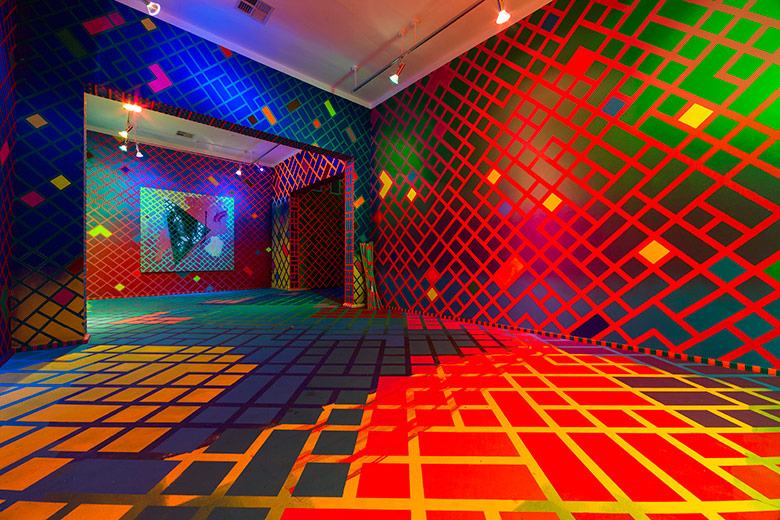

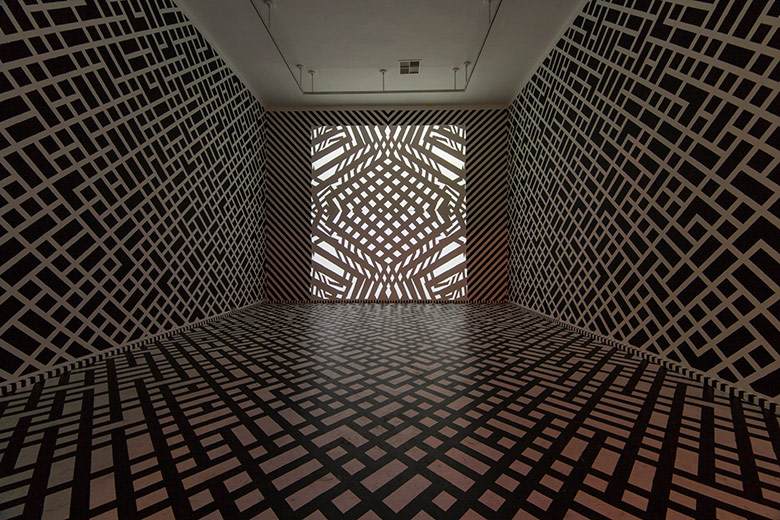
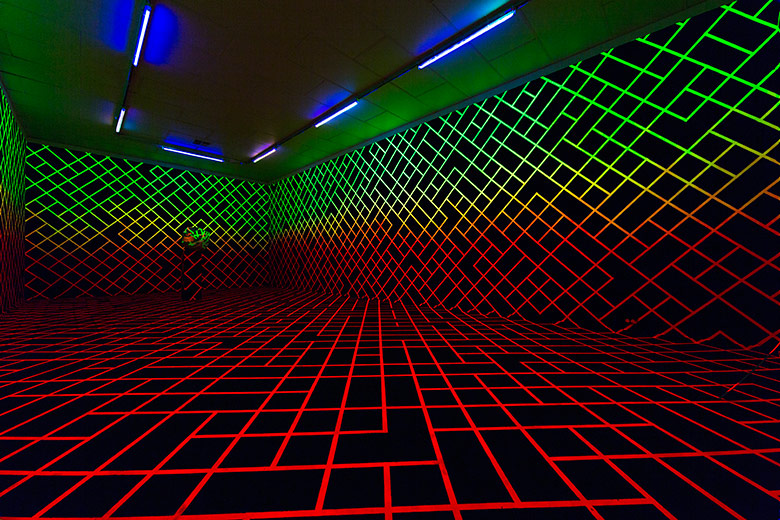 Digital Wasteland, 2014 - Photography by Emily Taylor
Digital Wasteland, 2014 - Photography by Emily Taylor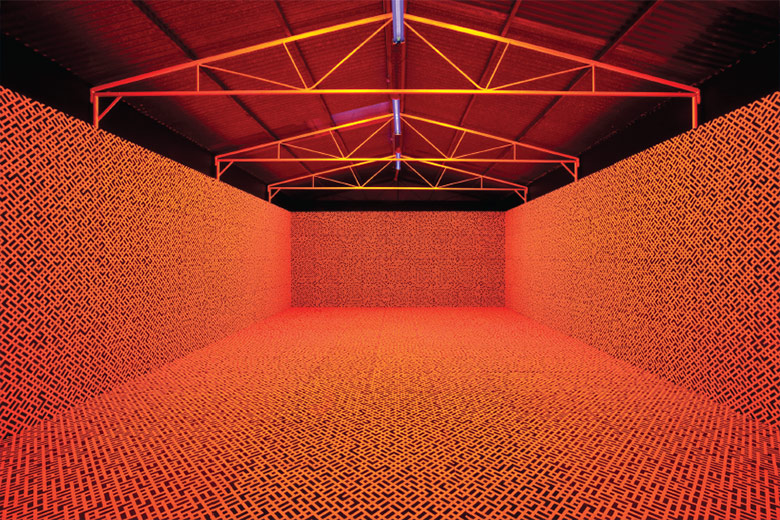 Media Centre, 2010 - Photography by Sam Roberts
Media Centre, 2010 - Photography by Sam Roberts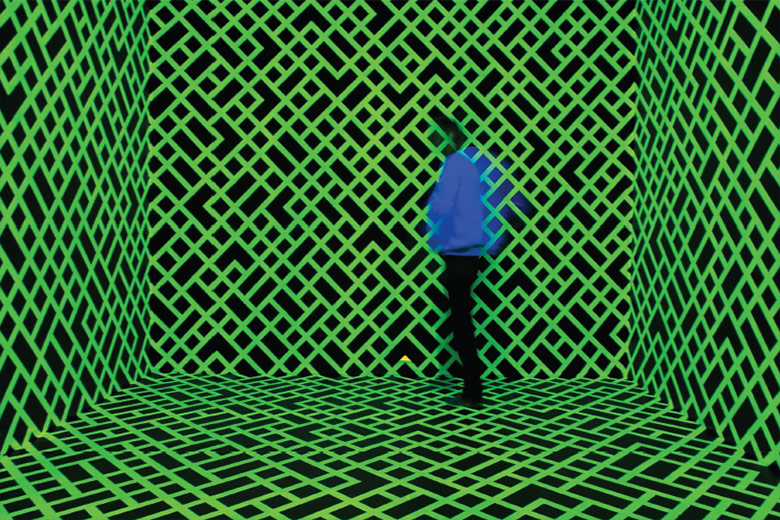 Yellow Room, 2012 - Photography by Emily Taylor
Yellow Room, 2012 - Photography by Emily Taylor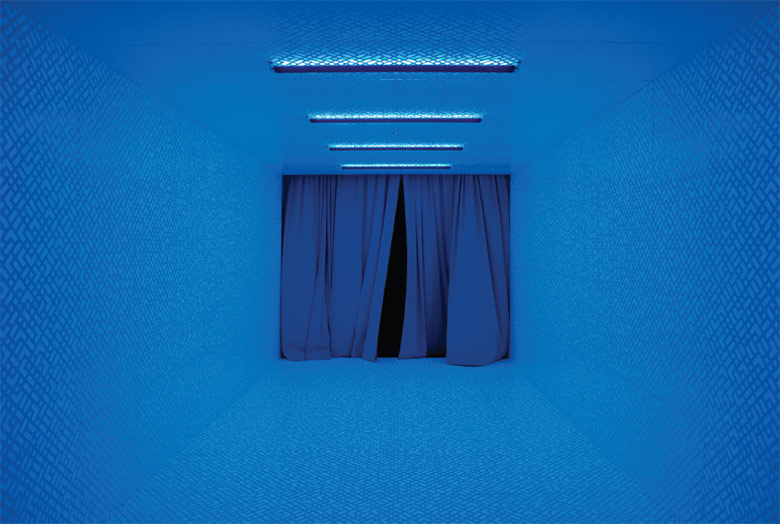 Opening, 2012 - Photography by Emily Taylor
Opening, 2012 - Photography by Emily Taylor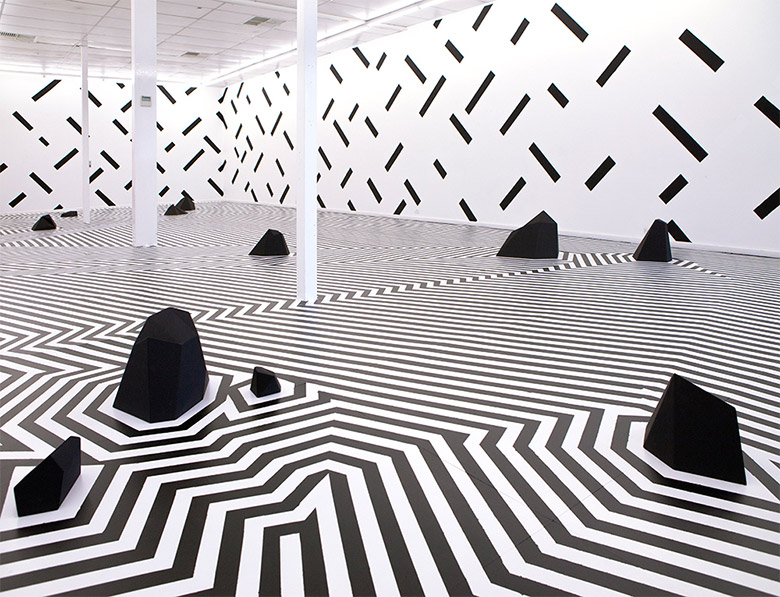 Zen Garden, 2013
Zen Garden, 2013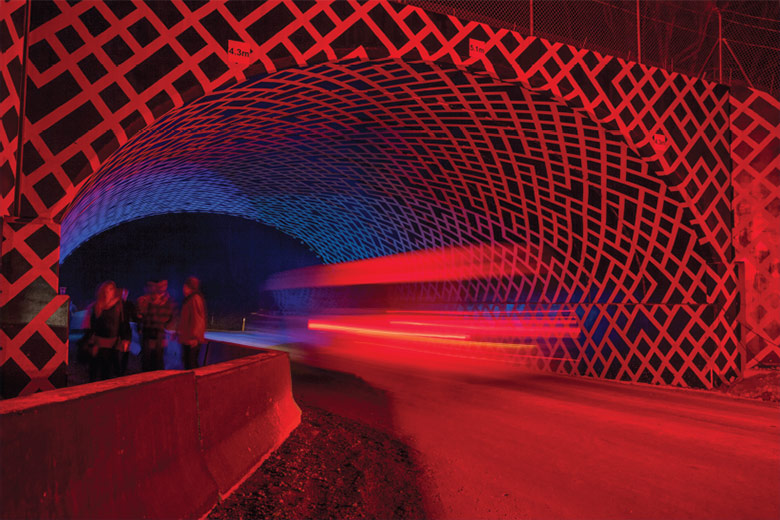 Splendour Arts, 2013 - Photography by Emily Taylor
Splendour Arts, 2013 - Photography by Emily Taylor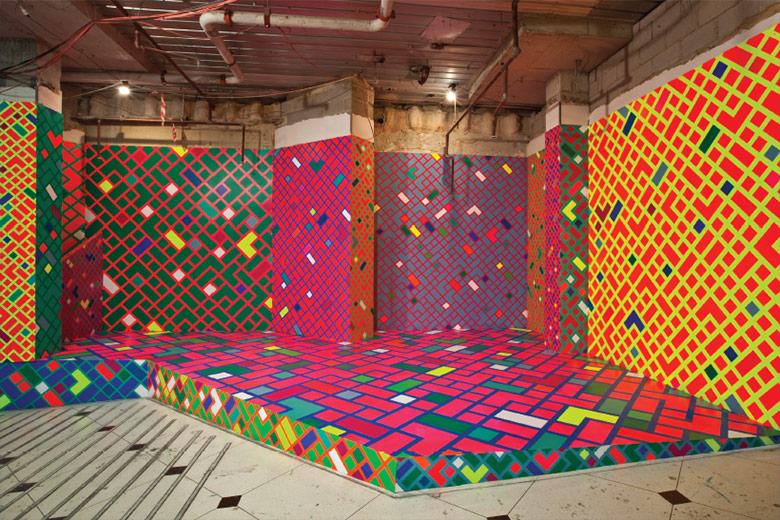 New Sound, 2013 - Photography by Sam Roberts
New Sound, 2013 - Photography by Sam Roberts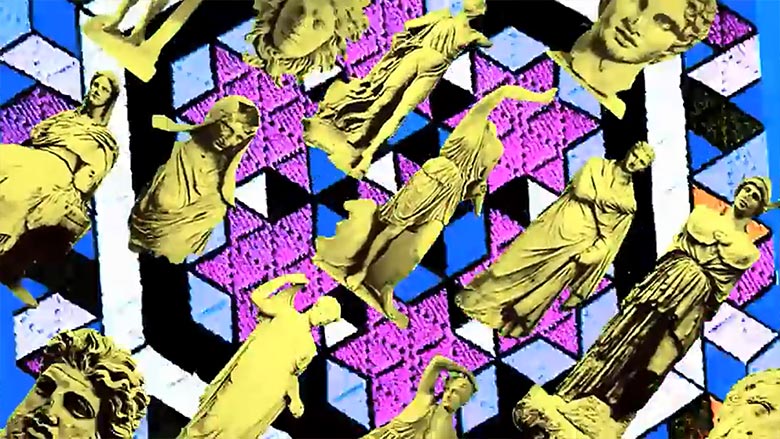
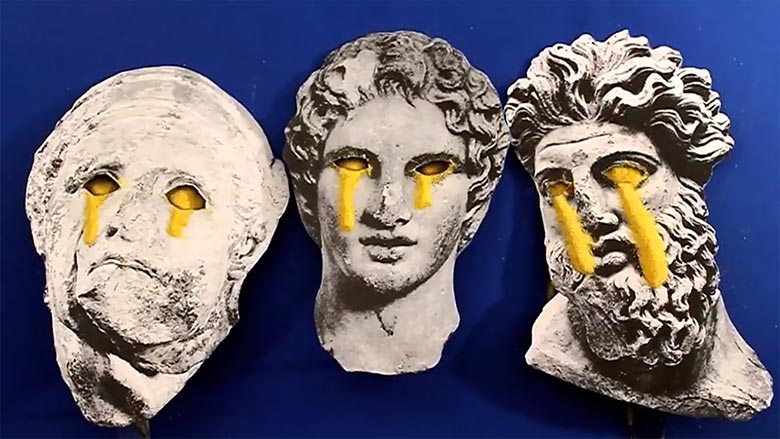
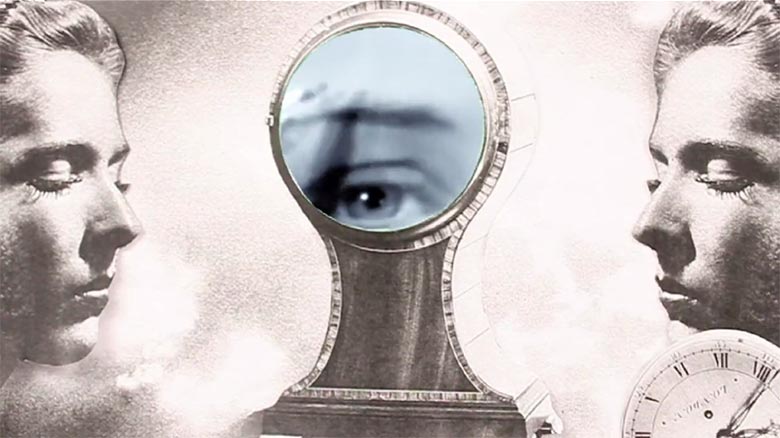
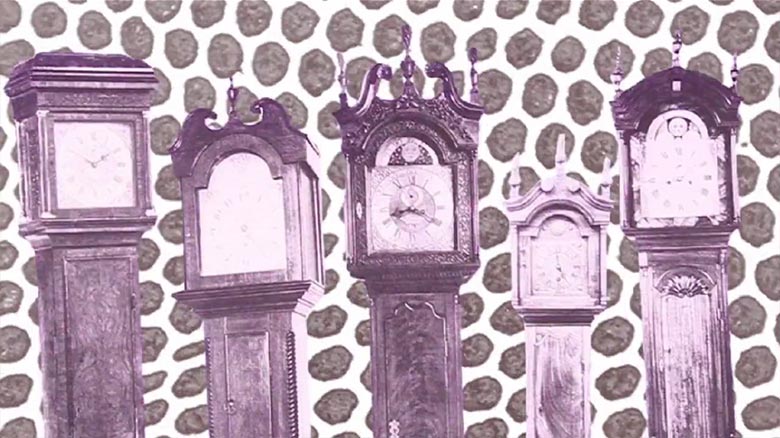

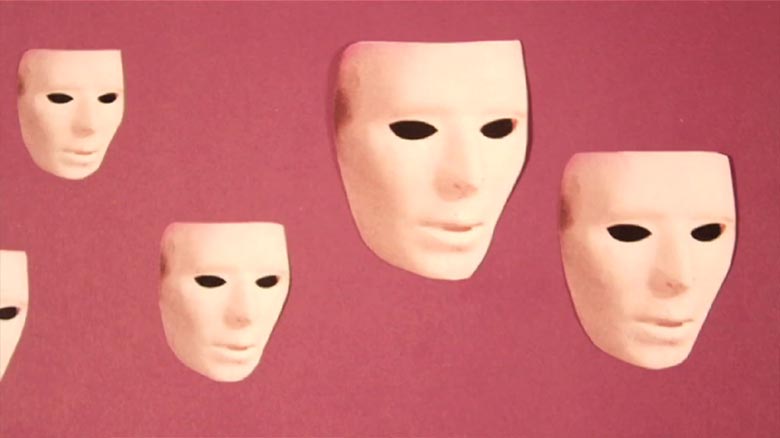
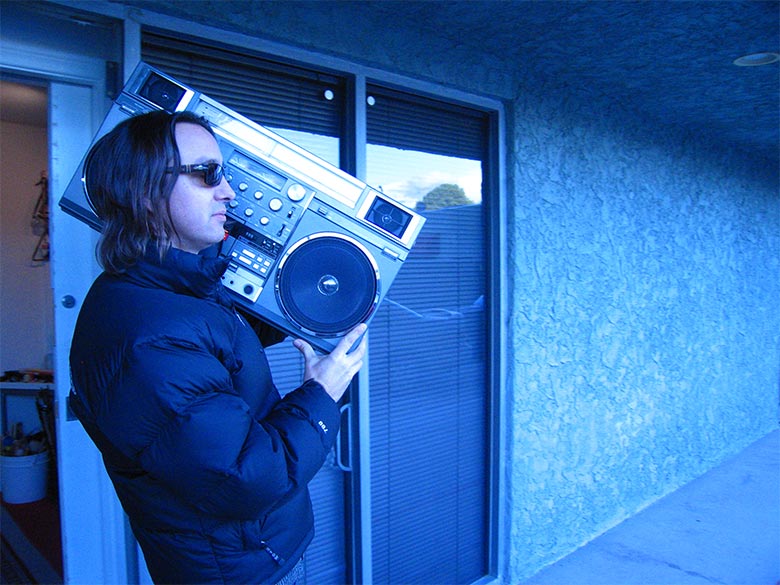
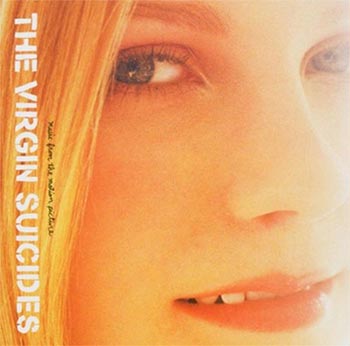
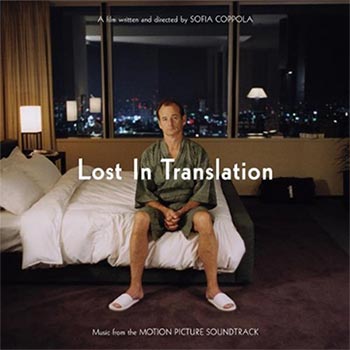


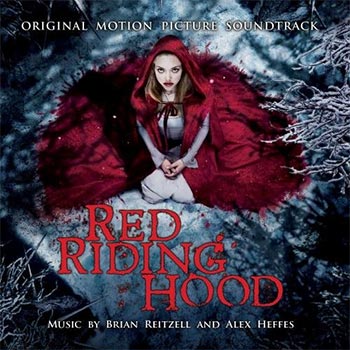
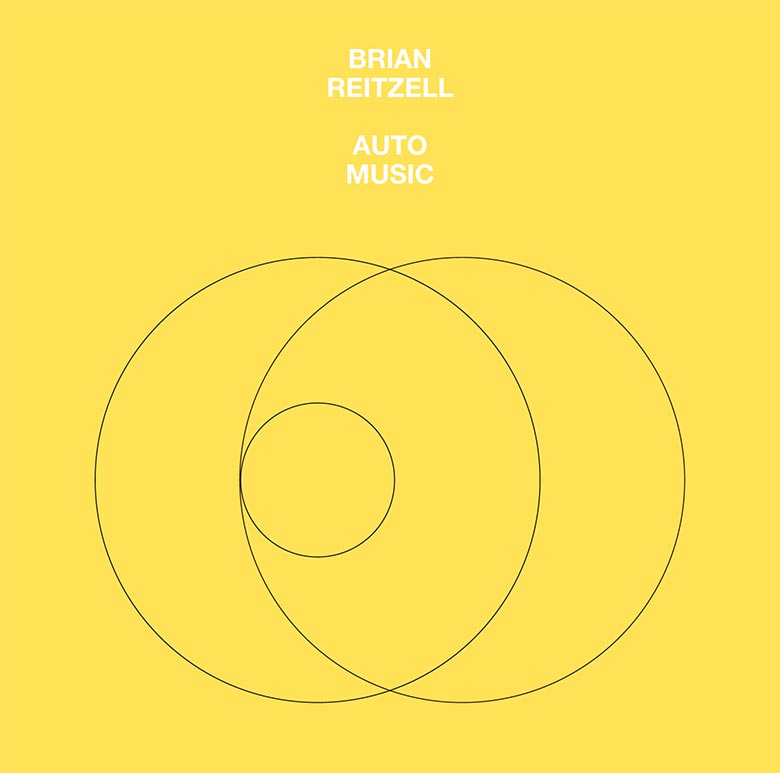



 "I would spend many of my mornings and afternoons assisting and helping with the resident scientists field research; this spanned anywhere from counting flowers in a given plot that populations are measured from over time to collecting bee samples from hives set up in a certain area, or even tagging hummingbirds in order to track their migratory patterns," recalls Dorf. "Through these experiences I was given a glimpse into how the landscape is broken down, dissected, and reassembled into other forms within their studies."
"I would spend many of my mornings and afternoons assisting and helping with the resident scientists field research; this spanned anywhere from counting flowers in a given plot that populations are measured from over time to collecting bee samples from hives set up in a certain area, or even tagging hummingbirds in order to track their migratory patterns," recalls Dorf. "Through these experiences I was given a glimpse into how the landscape is broken down, dissected, and reassembled into other forms within their studies." When Dorf begins a new body of work, it typically comes from a specific interest that he finds himself researching continually over a span of time. Before he knows it, though, he gradually begins to create new work based on the subject he has been researching.
When Dorf begins a new body of work, it typically comes from a specific interest that he finds himself researching continually over a span of time. Before he knows it, though, he gradually begins to create new work based on the subject he has been researching.

 MARK DORF - EMERGENCE SERIES
MARK DORF - EMERGENCE SERIES



 MARK DORF - AXIOM & SIMULATION
MARK DORF - AXIOM & SIMULATION



 MARK DORF - //_PATH SERIES
MARK DORF - //_PATH SERIES
 Back in April, I was on tour with a band, and we happened to have a day off in Albuquerque. We filled it with a number of activities, from bowling to thrift store shopping and milkshake drinking -- so when evening came and most others were ready to relax, one friend and I debated over watching Jonathan Glazer's Under The Skin, which I had been hyping all day. He was being wishy-washy, though, and, unable to decide, he finally concluded that I should draw a tarot card to settle the issue. For those unfamiliar with tarot cards, they are more often used for more in-depth divination, but each card can also be assigned yes or no values, with varying degrees of power. The card I received in response to whether we should go watch the film was "The Sun", which is generally known as "the happiest card in the tarot", with very few negative aspects. Hence, drawing it symbolized an emphatic yes to our question.
Back in April, I was on tour with a band, and we happened to have a day off in Albuquerque. We filled it with a number of activities, from bowling to thrift store shopping and milkshake drinking -- so when evening came and most others were ready to relax, one friend and I debated over watching Jonathan Glazer's Under The Skin, which I had been hyping all day. He was being wishy-washy, though, and, unable to decide, he finally concluded that I should draw a tarot card to settle the issue. For those unfamiliar with tarot cards, they are more often used for more in-depth divination, but each card can also be assigned yes or no values, with varying degrees of power. The card I received in response to whether we should go watch the film was "The Sun", which is generally known as "the happiest card in the tarot", with very few negative aspects. Hence, drawing it symbolized an emphatic yes to our question.





 Thrift Store Landscape With A Color Test (2009)
Thrift Store Landscape With A Color Test (2009) Sight Line (2013)
Sight Line (2013)
 a pair of faces (diptych) (2013)
a pair of faces (diptych) (2013)


 Select works from Chad Wys' American Tapestry Series
Select works from Chad Wys' American Tapestry Series A work dependent on chance
A work dependent on chance A work carefully deliberated
A work carefully deliberated A manipulation of a Raphael reproduction
A manipulation of a Raphael reproduction

 Select works from Chad Wys' Collage and Works on Paper Series
Select works from Chad Wys' Collage and Works on Paper Series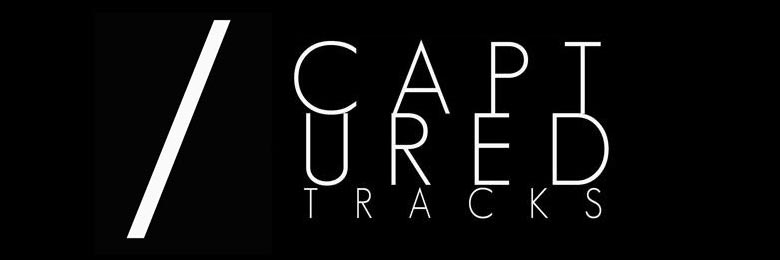
 One of the label's first notable releases was the first Dum Dum Girls EP in 2009; they have since signed buzzy bands such as DIIV, Wild Nothing, and Beach Fossils. Sniper tells us that when the label first started, it was just a one man operation that released new artist EPs and 7"s and relied on favors from friends.
One of the label's first notable releases was the first Dum Dum Girls EP in 2009; they have since signed buzzy bands such as DIIV, Wild Nothing, and Beach Fossils. Sniper tells us that when the label first started, it was just a one man operation that released new artist EPs and 7"s and relied on favors from friends.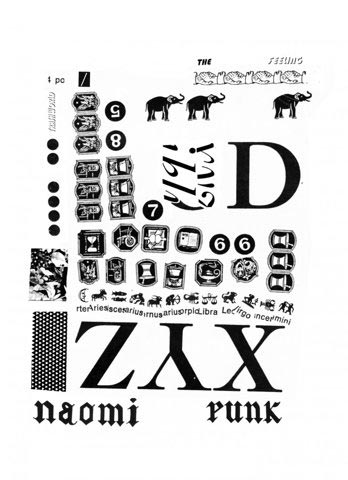 Likewise, Olympia, WA-based Naomi Punk weren't necessarily looking to sign to a label, but due to the "good vibe" that they got from Mike Sniper and Katie [Garcia], they weren't hesitate to bring their punk sound to a NY-based label without a heavy punk roster.
Likewise, Olympia, WA-based Naomi Punk weren't necessarily looking to sign to a label, but due to the "good vibe" that they got from Mike Sniper and Katie [Garcia], they weren't hesitate to bring their punk sound to a NY-based label without a heavy punk roster. 
 Lucho Bermúdez was a musician I discovered completely by accident on YouTube a few years ago. He's one of the most famous cumbia musicians in Colombia, but finding his CDs and recorded material in the United States is maddeningly difficult. Finding more than cursory information about him in English is also extremely difficult. Nevertheless, time spent on a few Colombian music blogs shed some light on his life and activities. He was born in El Carmen de Bolivar in 1912 and by age nine was already able to play the saxophone, the trombone, the trumpet and the flute. Bermúdez studied with a music professor who was interested in the jazz coming out of North America, and he soon began combining big band styles with Colombian cumbia music. He first recorded for RCA Victor in 1946 and proved to be wildly popular, appearing in the first Colombian television broadcast in 1954. He played music for the remainder of his life, eventually dying in 1994 after a long life of music, tours and honors from his country.
Lucho Bermúdez was a musician I discovered completely by accident on YouTube a few years ago. He's one of the most famous cumbia musicians in Colombia, but finding his CDs and recorded material in the United States is maddeningly difficult. Finding more than cursory information about him in English is also extremely difficult. Nevertheless, time spent on a few Colombian music blogs shed some light on his life and activities. He was born in El Carmen de Bolivar in 1912 and by age nine was already able to play the saxophone, the trombone, the trumpet and the flute. Bermúdez studied with a music professor who was interested in the jazz coming out of North America, and he soon began combining big band styles with Colombian cumbia music. He first recorded for RCA Victor in 1946 and proved to be wildly popular, appearing in the first Colombian television broadcast in 1954. He played music for the remainder of his life, eventually dying in 1994 after a long life of music, tours and honors from his country. Arsenio Rodríguez is one of the great Cuban son musicians who had a hand in creating modern mambo and salsa. Born in 1911, he was blinded at a young age by a kick to the head from a horse. Rodríguez learned to play the tres, a Cuban stringed instrument, and began to alter the rhythmic structure of the son genre, making it more contrapuntal. He added trumpets, the piano, and conga drums to the standard ensemble, giving the rhythm a strong place in the music and making it suitable as dance music. Rodríguez moved back and forth between Cuba and New York, eventually leaving Cuba for good in 1953. Though he saw some success, his popularity began to dwindle as interest in mambo music waned. His last years were not in poverty as some have alleged, but he only made a modest living off of royalties when he died in 1970.
Arsenio Rodríguez is one of the great Cuban son musicians who had a hand in creating modern mambo and salsa. Born in 1911, he was blinded at a young age by a kick to the head from a horse. Rodríguez learned to play the tres, a Cuban stringed instrument, and began to alter the rhythmic structure of the son genre, making it more contrapuntal. He added trumpets, the piano, and conga drums to the standard ensemble, giving the rhythm a strong place in the music and making it suitable as dance music. Rodríguez moved back and forth between Cuba and New York, eventually leaving Cuba for good in 1953. Though he saw some success, his popularity began to dwindle as interest in mambo music waned. His last years were not in poverty as some have alleged, but he only made a modest living off of royalties when he died in 1970.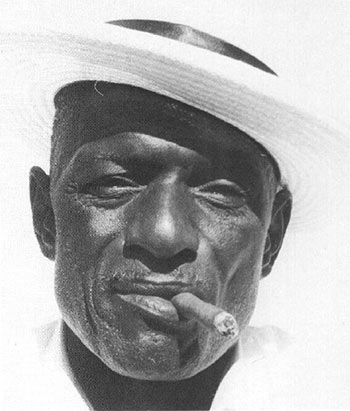 Joseph Spence has been called the Thelonious Monk of folk guitarists because of his unusual tunings and playing style, which often sounds like two guitarists playing at once. He was born in 1910 in the Bahamas and spent most of his life working as a laborer.
Joseph Spence has been called the Thelonious Monk of folk guitarists because of his unusual tunings and playing style, which often sounds like two guitarists playing at once. He was born in 1910 in the Bahamas and spent most of his life working as a laborer.
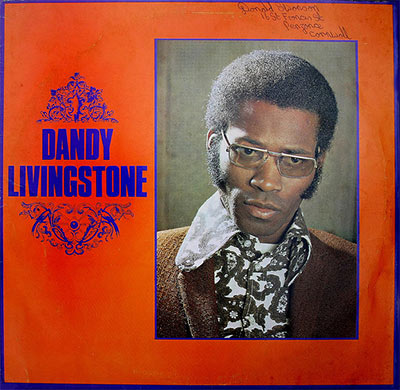 The last musician in my mix is a Jamaican ska singer, Dandy Livingstone. Livingstone was born in St. Andrews, Jamaica in 1943 and moved to Great Britain in 1958. He was initially uninterested in a career in music, but was eventually drawn in by the music his friends were listening to. In the late ‘50s and early ‘60s, West Indian immigration to Britain exploded, and there was a burgeoning market for ska music. Livingstone was able to tap into this, first as a musician doing singles and then as a producer at Trojan Records. As his music became less popular, Livingstone disappeared from the music scene for several years and eventually returned to Jamaica in 1982. His last albums were recorded in the 1970s, but the ongoing popularity of ska and the 2 Tone movement in Britain kept public memory of Livingstone strong. Livingstone has since largely disappeared from the public eye and has not performed in public for several decades.
The last musician in my mix is a Jamaican ska singer, Dandy Livingstone. Livingstone was born in St. Andrews, Jamaica in 1943 and moved to Great Britain in 1958. He was initially uninterested in a career in music, but was eventually drawn in by the music his friends were listening to. In the late ‘50s and early ‘60s, West Indian immigration to Britain exploded, and there was a burgeoning market for ska music. Livingstone was able to tap into this, first as a musician doing singles and then as a producer at Trojan Records. As his music became less popular, Livingstone disappeared from the music scene for several years and eventually returned to Jamaica in 1982. His last albums were recorded in the 1970s, but the ongoing popularity of ska and the 2 Tone movement in Britain kept public memory of Livingstone strong. Livingstone has since largely disappeared from the public eye and has not performed in public for several decades.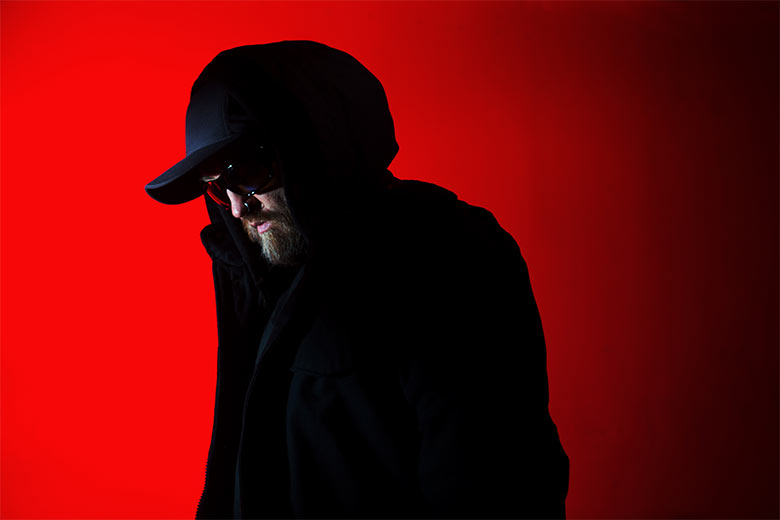
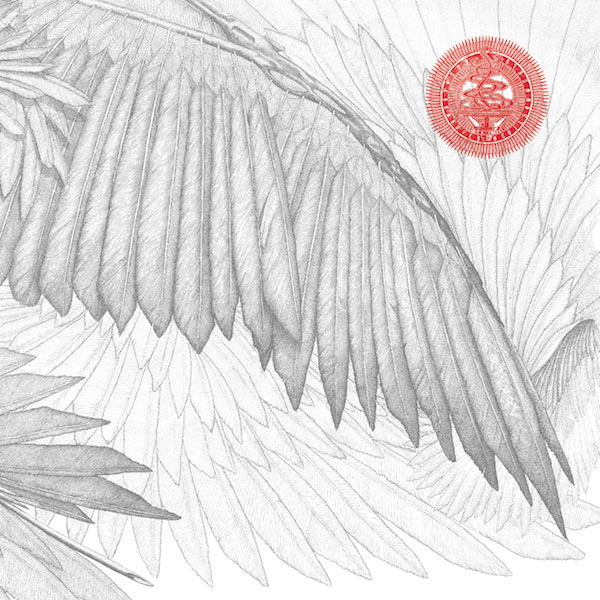












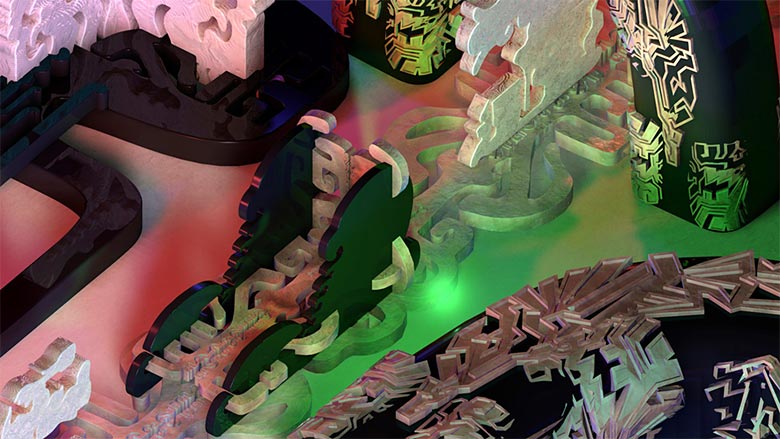
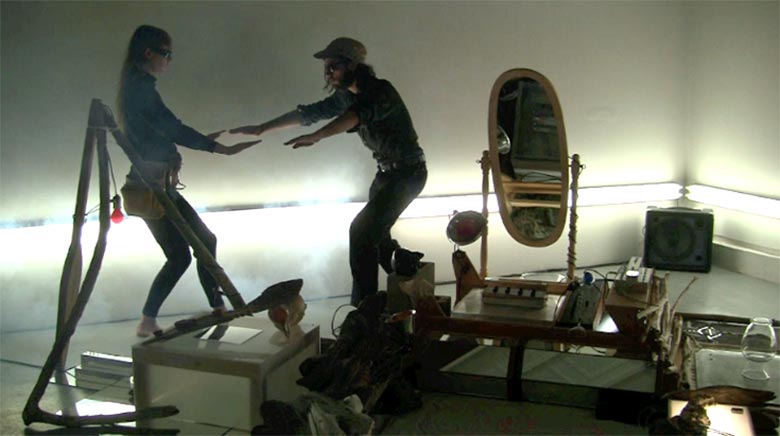

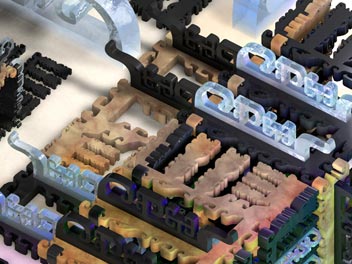

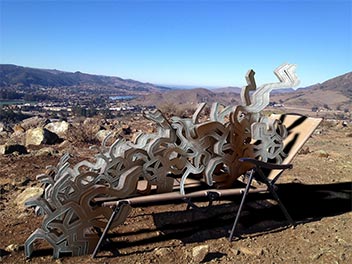
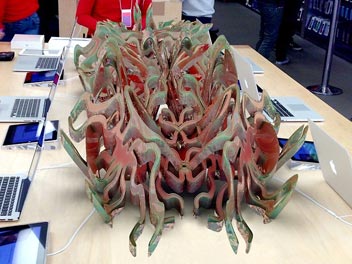


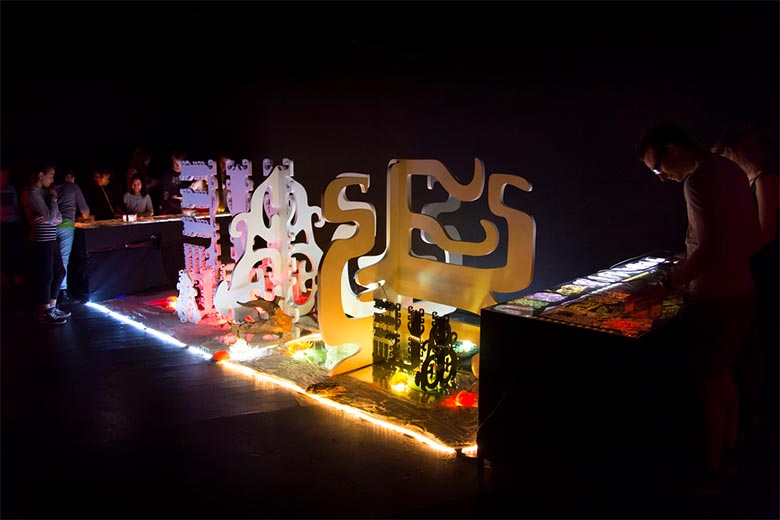
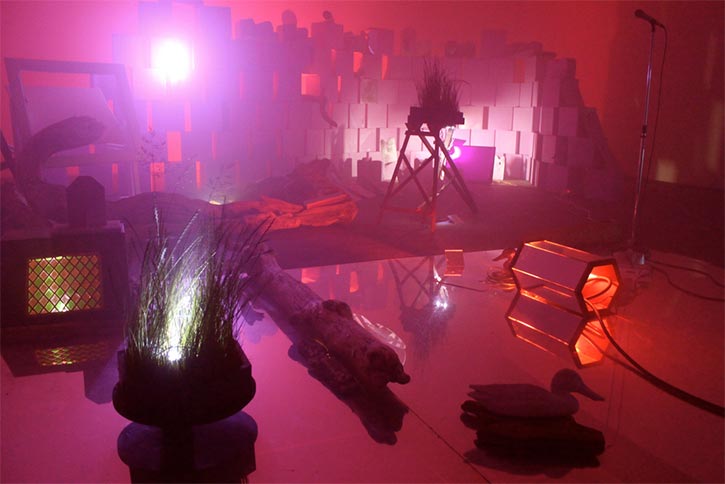
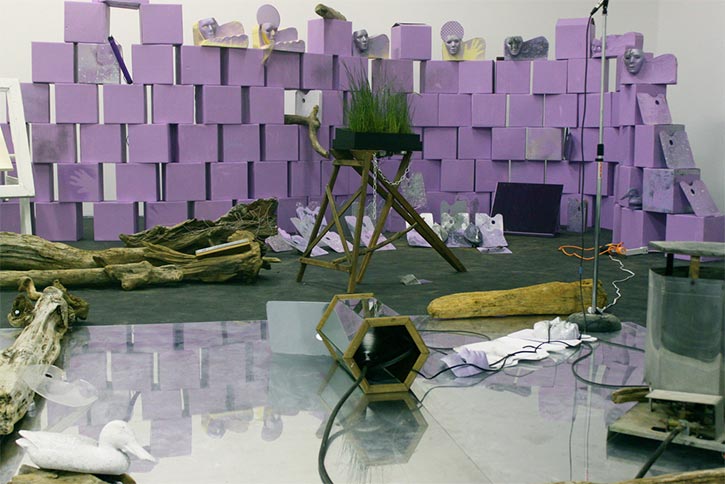
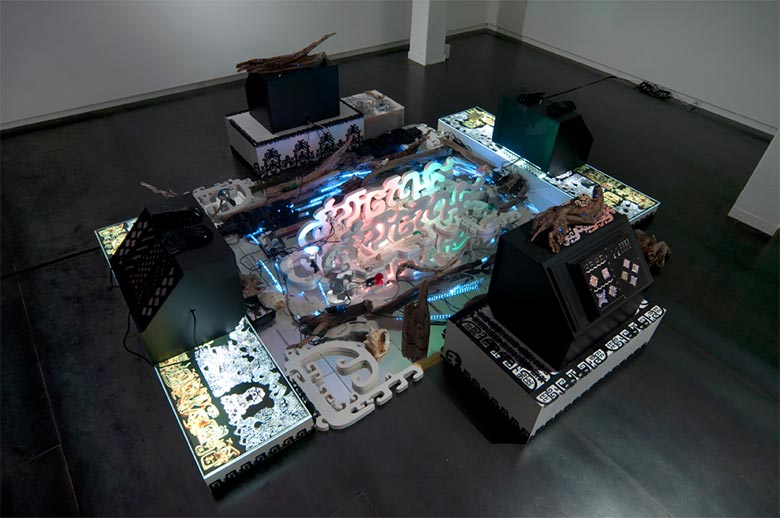
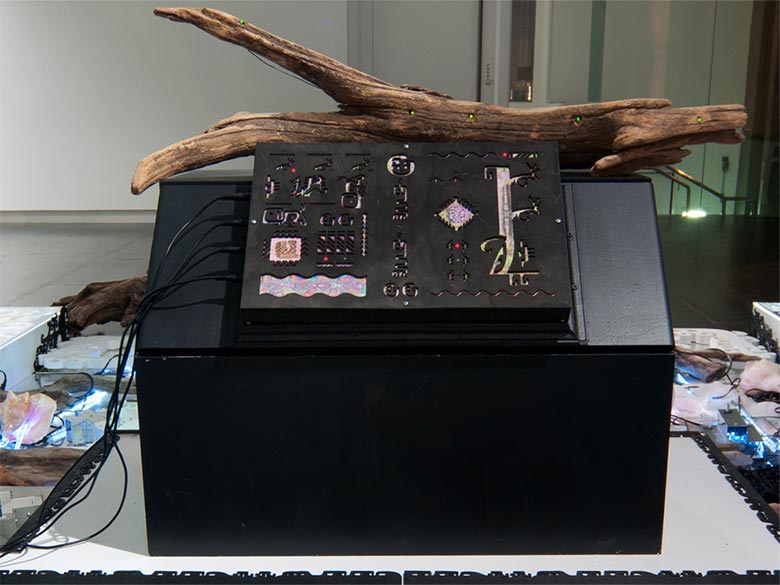
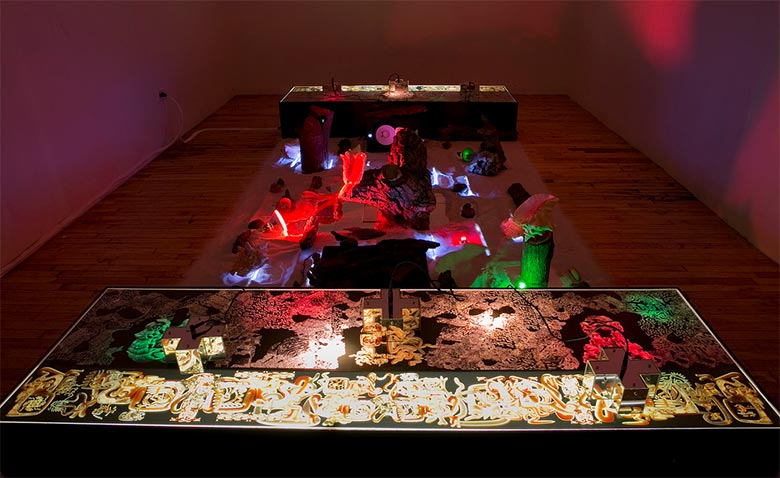
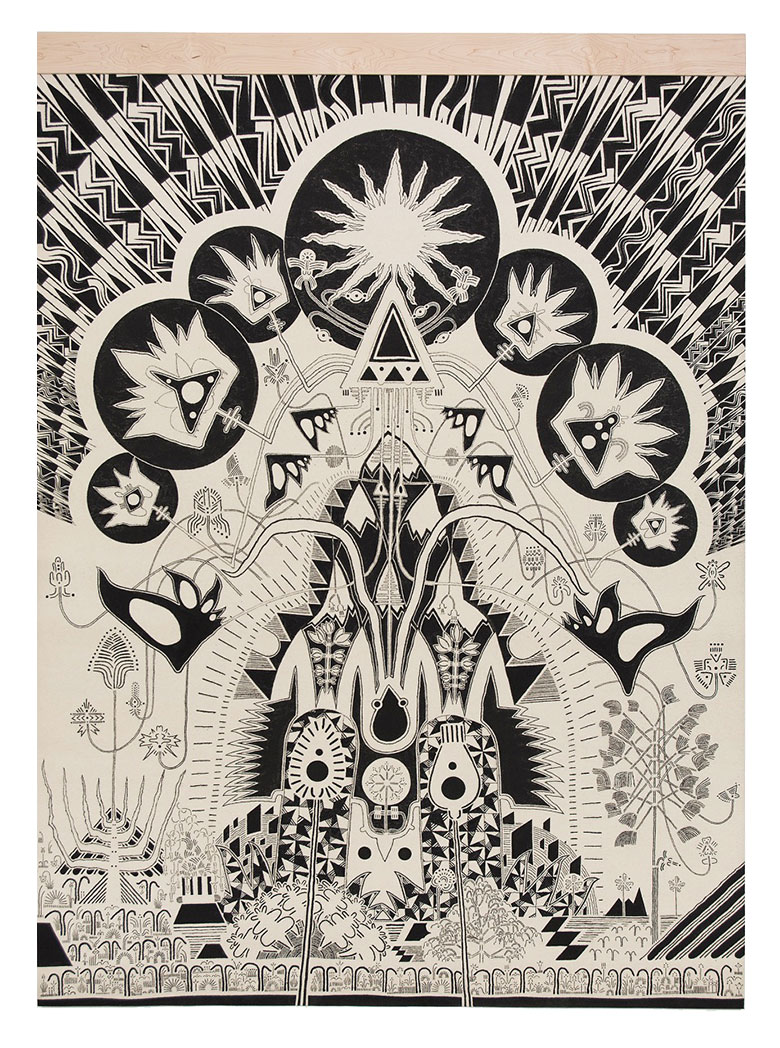
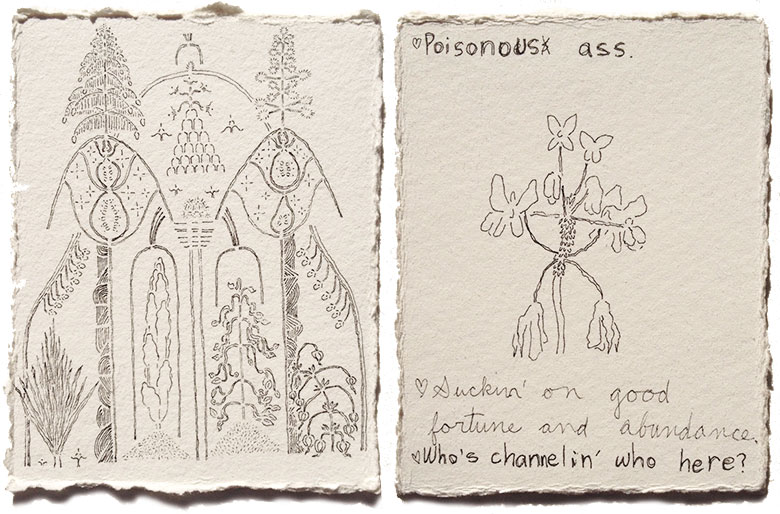
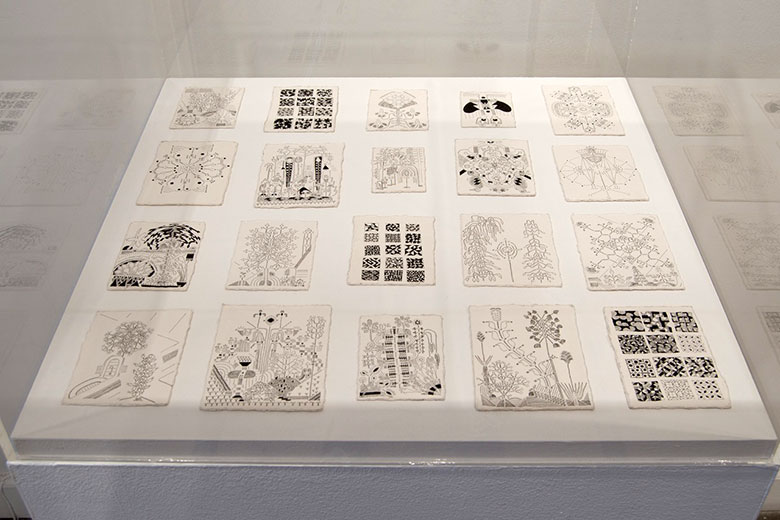
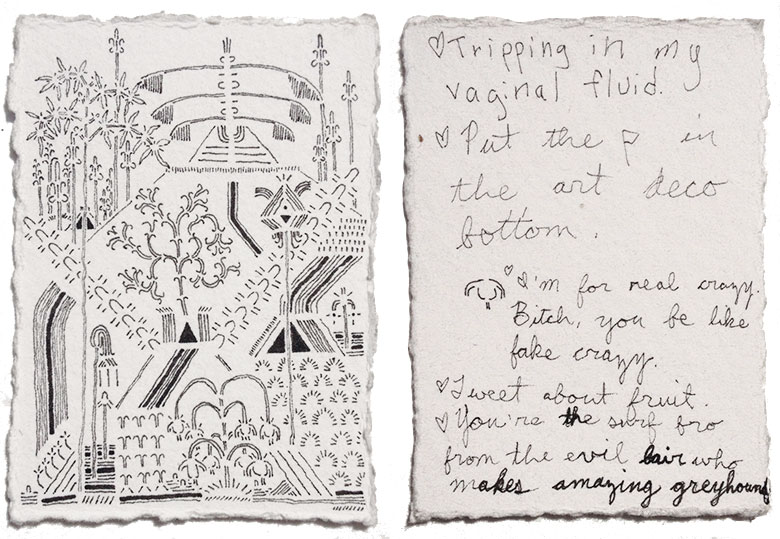
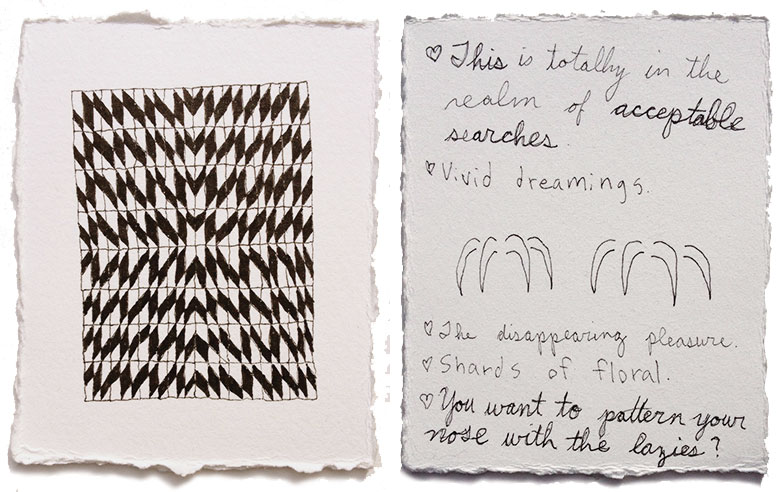
 expert team true believer, 2013, pen and ink on paper, 3 1/2 x 2 ½ inches
expert team true believer, 2013, pen and ink on paper, 3 1/2 x 2 ½ inches
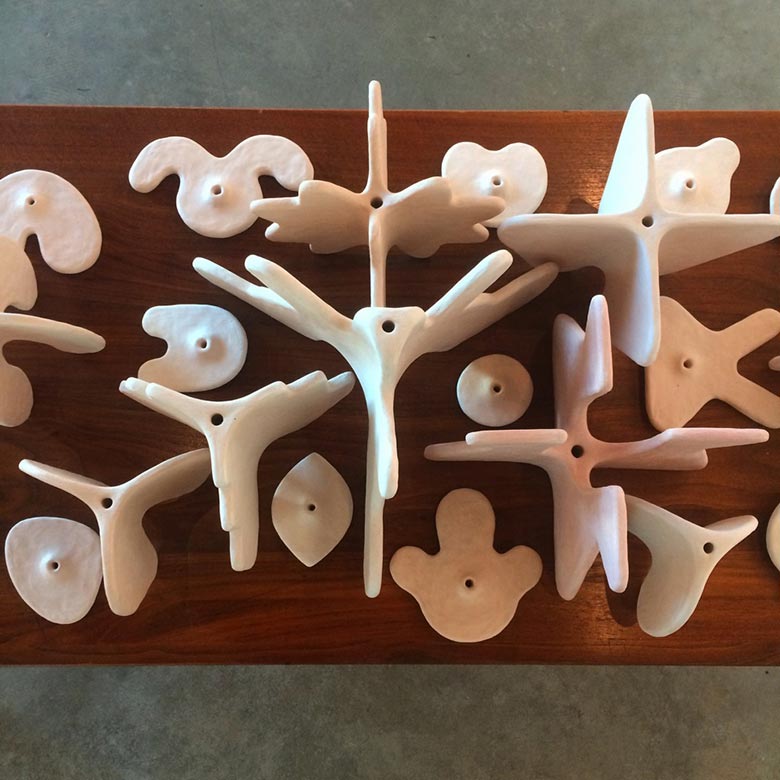
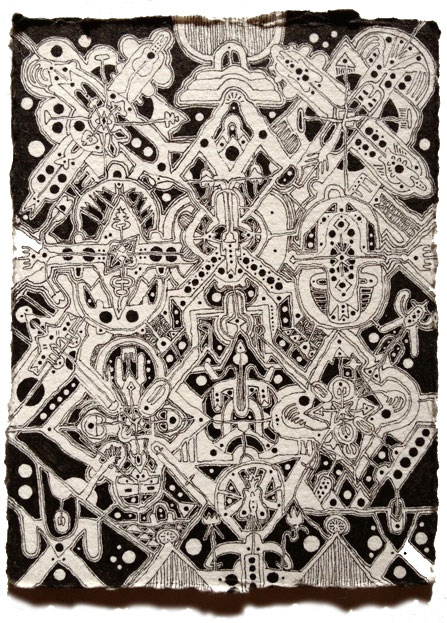
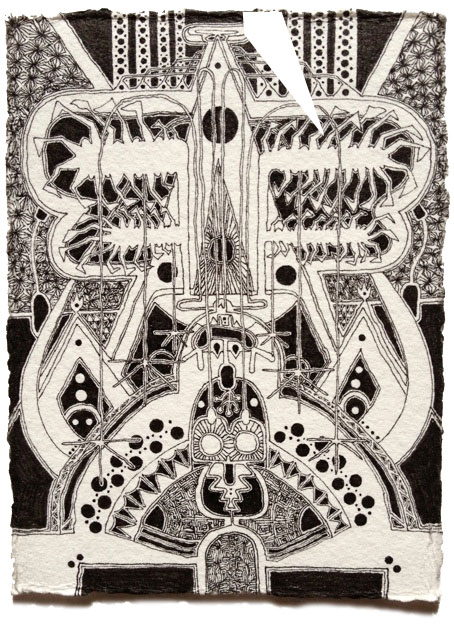 embracing the dark, 2012, pen and ink on paper, 3 1/2 x 2 ½ inches
embracing the dark, 2012, pen and ink on paper, 3 1/2 x 2 ½ inches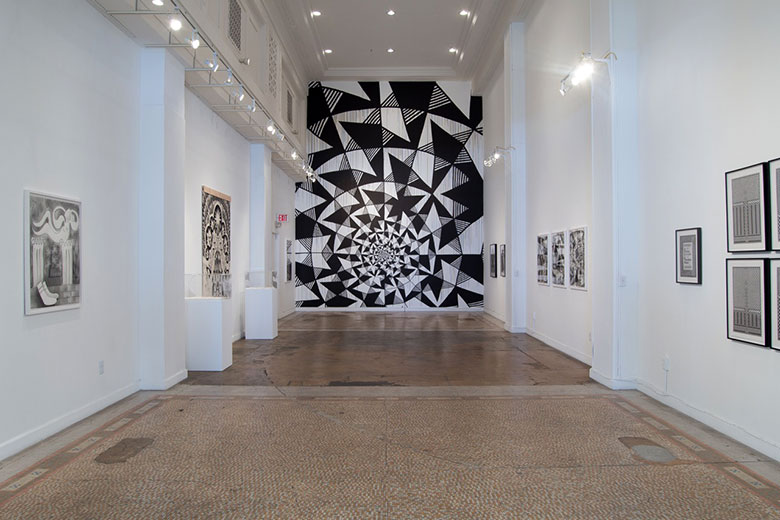
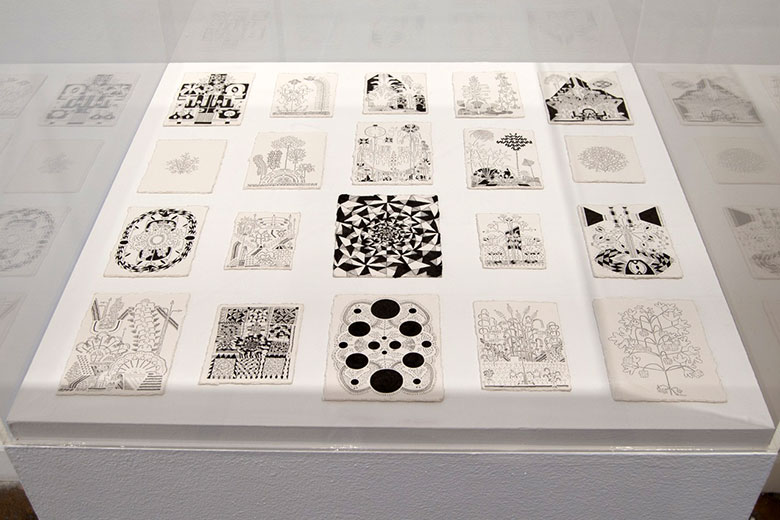
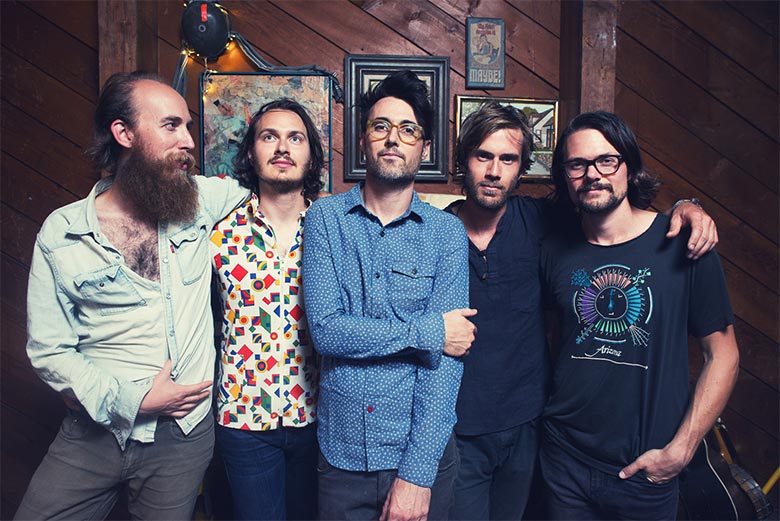

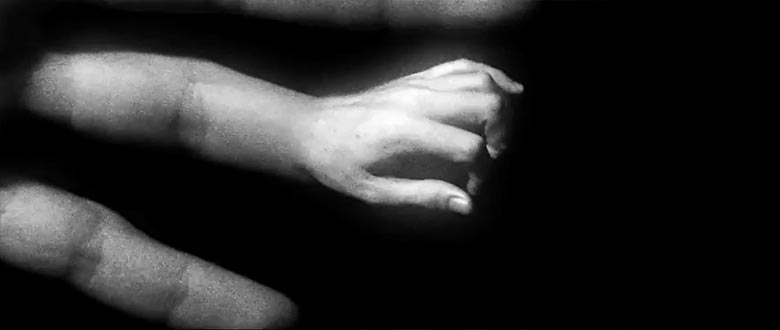
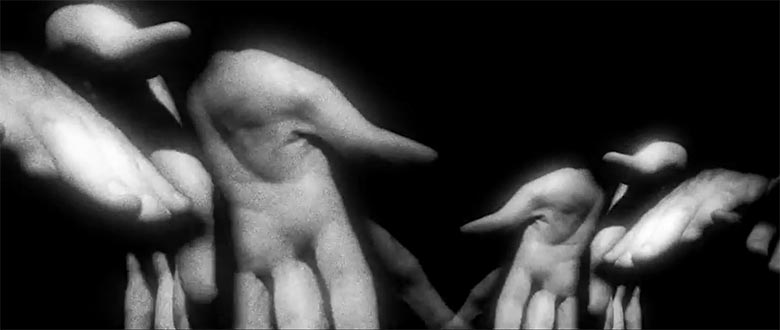
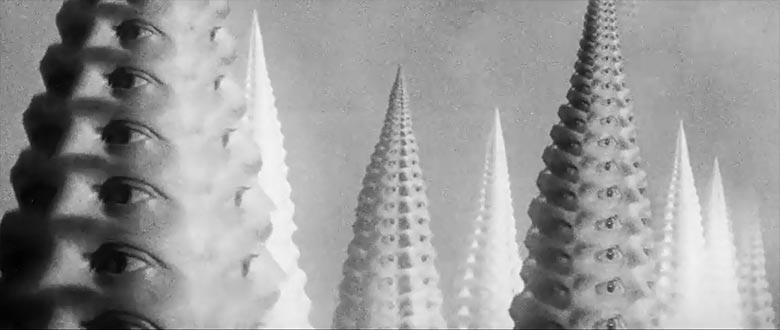

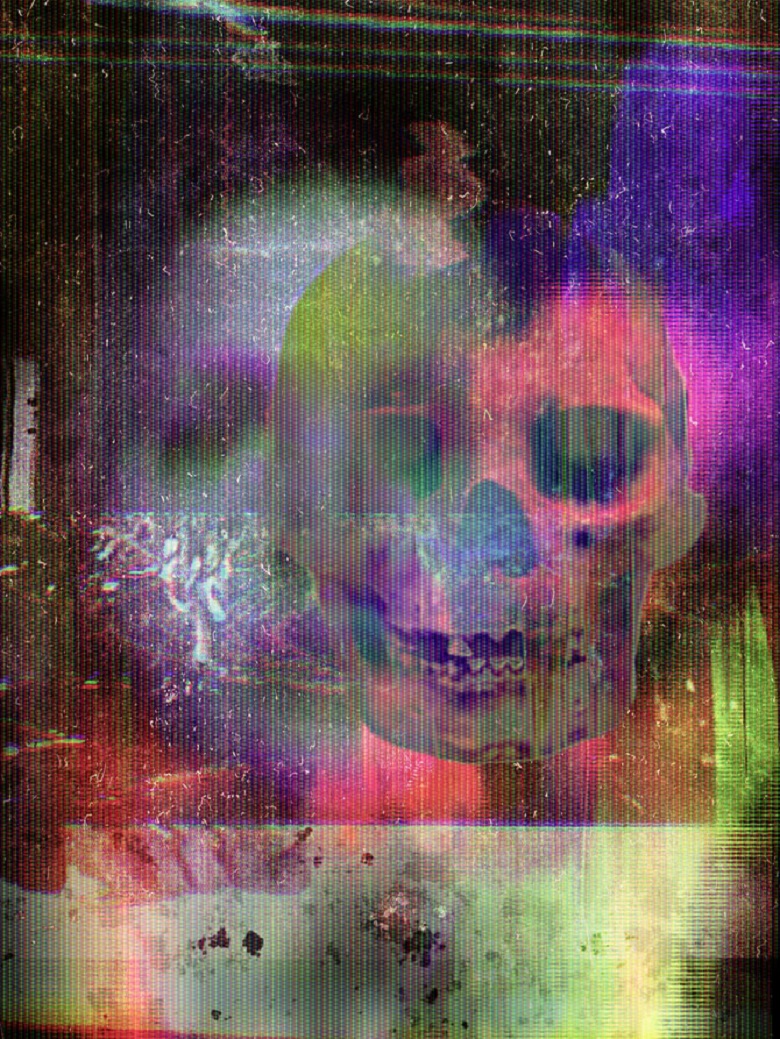


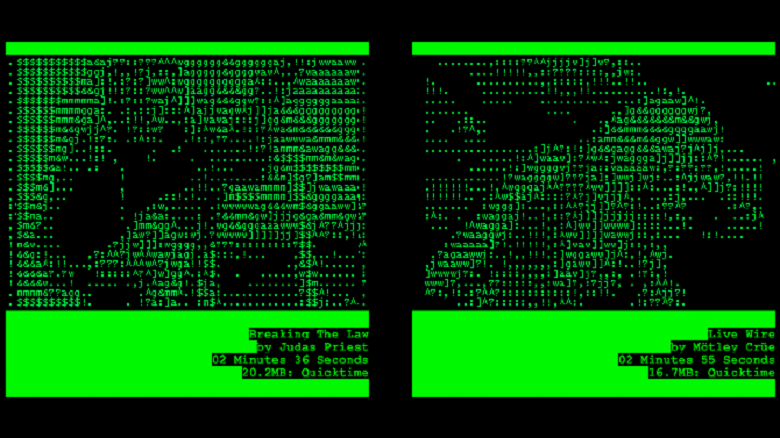


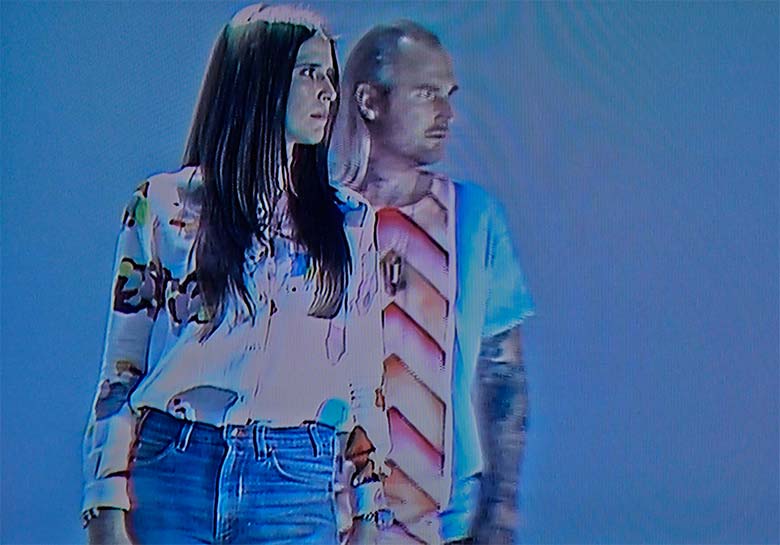
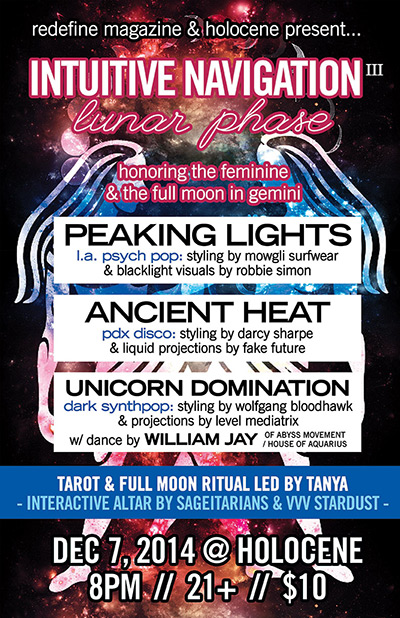
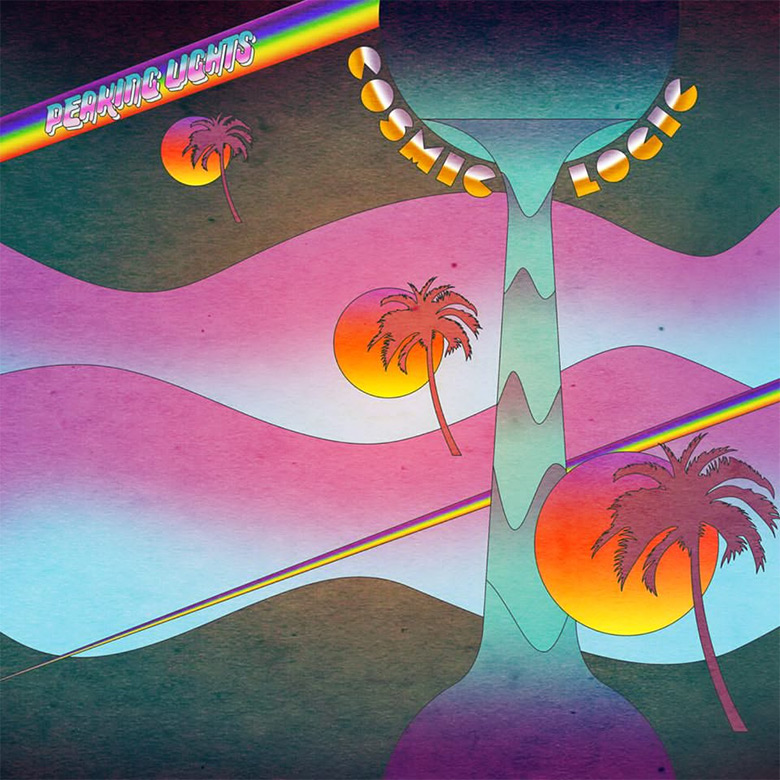

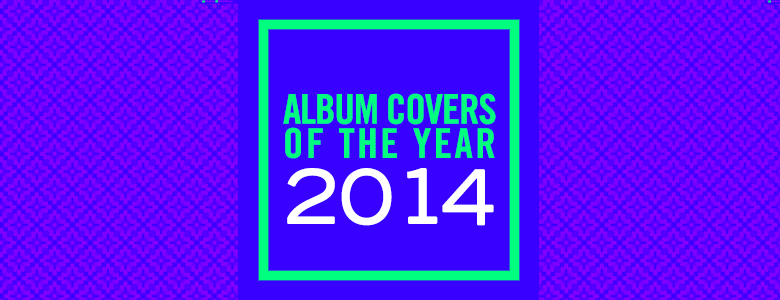













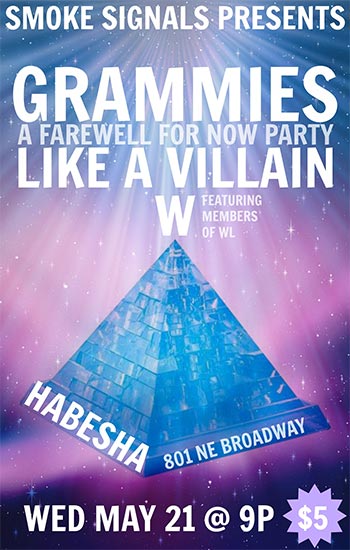 First things first, I totally missed W (featuring members of WL -- but they're a great band), so I can't give a holistic picture of the evening, but what transpired in the time I was present was remarkable. This grouping of artists doesn't have the acclaim/exposure as the other big ticket acts on this list, so it's worth noting that this one bowled me over in a way the others didn't. I went to the other shows on this list with great excitement and anticipation. This particular night was a pleasant surprise and a welcome reminder to keep taking chances on local lineups/smaller billings, and you know, support friends' bands.
First things first, I totally missed W (featuring members of WL -- but they're a great band), so I can't give a holistic picture of the evening, but what transpired in the time I was present was remarkable. This grouping of artists doesn't have the acclaim/exposure as the other big ticket acts on this list, so it's worth noting that this one bowled me over in a way the others didn't. I went to the other shows on this list with great excitement and anticipation. This particular night was a pleasant surprise and a welcome reminder to keep taking chances on local lineups/smaller billings, and you know, support friends' bands. 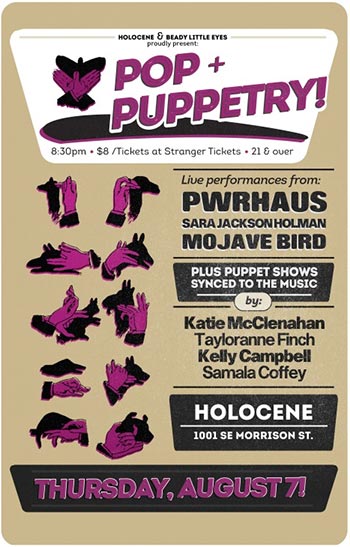 This year I became aware of a very robust and vibrant artistic community of puppet artists in Portland and was immediately fascinated by their creations. I found their whimsical creative energy so inspiring that I asked the wonderful Katie McClenahan of Beady Little Eyes to help me curate a show pairing live music with puppetry. Artists PWRHAUS, Sara Jackson Holman and Mojave Bird were paired up with puppet artists of various mediums for a dazzling audiovisual experience, with original puppet shows specifically tailored to each act's set. Tiny puppet shows using overhead projectors, handheld puppet figures with elaborate costumes and shadow puppetry utilizing live dancers were all incorporated in the show. It was an enchanting evening for audience, puppeteers and musicians alike, and it really did feel as though the combination of the two artistic disciplines helped both to achieve a new and deeper resonance. -
This year I became aware of a very robust and vibrant artistic community of puppet artists in Portland and was immediately fascinated by their creations. I found their whimsical creative energy so inspiring that I asked the wonderful Katie McClenahan of Beady Little Eyes to help me curate a show pairing live music with puppetry. Artists PWRHAUS, Sara Jackson Holman and Mojave Bird were paired up with puppet artists of various mediums for a dazzling audiovisual experience, with original puppet shows specifically tailored to each act's set. Tiny puppet shows using overhead projectors, handheld puppet figures with elaborate costumes and shadow puppetry utilizing live dancers were all incorporated in the show. It was an enchanting evening for audience, puppeteers and musicians alike, and it really did feel as though the combination of the two artistic disciplines helped both to achieve a new and deeper resonance. - 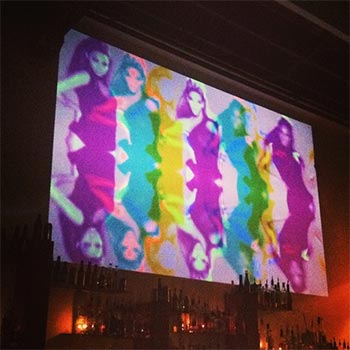 We throw a great many dance parties at Holocene, but Bey Day took the cake this year. In celebration of Beyonce's 33rd birthday, we put on a tribute dance party devoted to the Queen and had nearly 600 people show up to celebrate (many of them dressed to the nines for the costume contest). Live visuals by Four Eels included projections with Beyonce's name on highest windows, as a sort of bat signal that could be seen from a block away, and encouraging people to take to IG & Twitter with #birthbey. Great vibes abounded... all were feeling fancy, wild, sassy and free. It's nearly impossible to think of another current pop star that has such widespread appeal for men and women with such diverse aesthetic sensibilities. In a time of ever-telescoping subcultures and mega-hyphenated subgenres, Queen Bey really is a unifying and uplifting force in pop music… Queen Bey, our genuflection before you won't be seeing an end anytime soon. -
We throw a great many dance parties at Holocene, but Bey Day took the cake this year. In celebration of Beyonce's 33rd birthday, we put on a tribute dance party devoted to the Queen and had nearly 600 people show up to celebrate (many of them dressed to the nines for the costume contest). Live visuals by Four Eels included projections with Beyonce's name on highest windows, as a sort of bat signal that could be seen from a block away, and encouraging people to take to IG & Twitter with #birthbey. Great vibes abounded... all were feeling fancy, wild, sassy and free. It's nearly impossible to think of another current pop star that has such widespread appeal for men and women with such diverse aesthetic sensibilities. In a time of ever-telescoping subcultures and mega-hyphenated subgenres, Queen Bey really is a unifying and uplifting force in pop music… Queen Bey, our genuflection before you won't be seeing an end anytime soon. - 


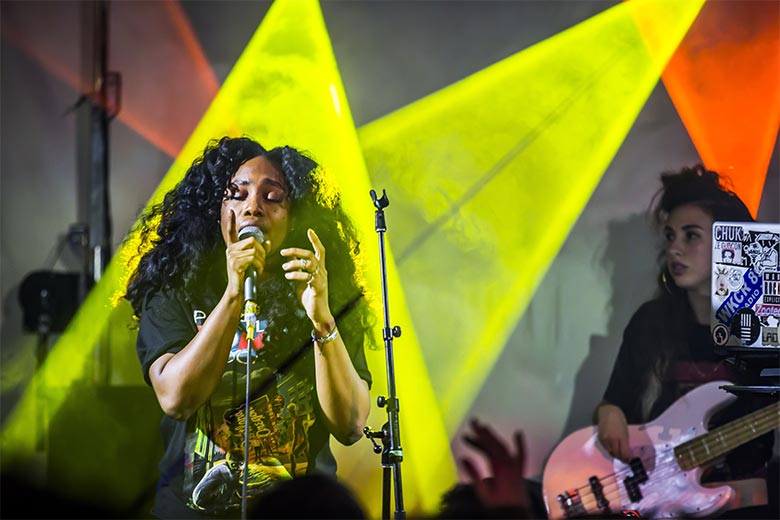
 Opener White Gourd is the tarot-informed solo act of the striking Suzanne (I haven't the foggiest what her last name is). In conjunction with great visuals by vVv stardust, her act got to the heart of the curatorial mission of the series overall - some sense of esoteric ritual through conceptual performance. It was a perfect seance and portal-opener for other, more tender ghosts called forth by Liz Harris' set. I've seen Grouper several times and none of them have hit me the way that this one has. Backed by simple but stunning visuals from sometimes collaborator Paul Clipson, Harris explored another side of her most recent from work on Ruins, opting for guitar where the album features piano. It was a really delicate and earnest performance to a full house in the sanctuary of a church. It's an environment I think Harris and her kind of cozy blanket/warm water/ghostly sound excels in, where people have gathered to perhaps explore or experience something thoughtful and beautiful that is both communal and personal. It felt like a collective surrender, or a sigh. -
Opener White Gourd is the tarot-informed solo act of the striking Suzanne (I haven't the foggiest what her last name is). In conjunction with great visuals by vVv stardust, her act got to the heart of the curatorial mission of the series overall - some sense of esoteric ritual through conceptual performance. It was a perfect seance and portal-opener for other, more tender ghosts called forth by Liz Harris' set. I've seen Grouper several times and none of them have hit me the way that this one has. Backed by simple but stunning visuals from sometimes collaborator Paul Clipson, Harris explored another side of her most recent from work on Ruins, opting for guitar where the album features piano. It was a really delicate and earnest performance to a full house in the sanctuary of a church. It's an environment I think Harris and her kind of cozy blanket/warm water/ghostly sound excels in, where people have gathered to perhaps explore or experience something thoughtful and beautiful that is both communal and personal. It felt like a collective surrender, or a sigh. - 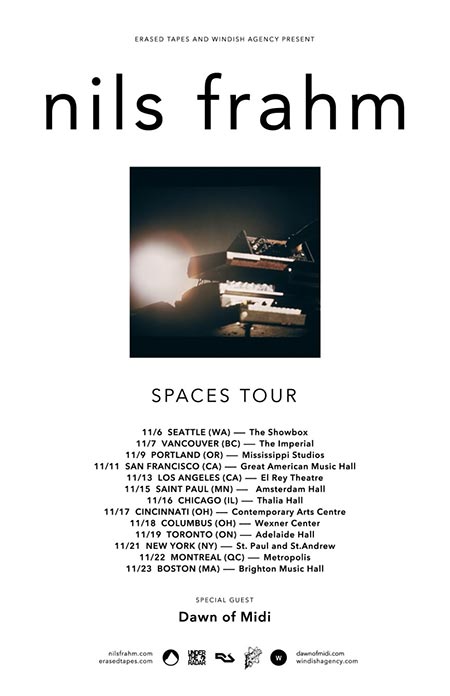 I don't think there's an artist I've seen more in the past year than Nils Frahm, and it's been rewarding every time. One of the more exciting, enthralling young modern composers, he's a brilliant crafter of space, sentiment, and sound -- not to mention an endearing and humorous presence in between his sprawling, expansive piano and keyboard pieces that run the gamut of daring exploration to introspective fragility.
I don't think there's an artist I've seen more in the past year than Nils Frahm, and it's been rewarding every time. One of the more exciting, enthralling young modern composers, he's a brilliant crafter of space, sentiment, and sound -- not to mention an endearing and humorous presence in between his sprawling, expansive piano and keyboard pieces that run the gamut of daring exploration to introspective fragility. 
 Despite being one of the best live bands in Seattle, I must confess that Helms Alee's previous two outings were only really great in small doses, which I tend to geek out on 3 or 4 songs before getting bored and moving on. Granted, those 3 or 4 songs are genius – but this is their first album that slays all the way through, and weirdly, it works not necessarily because of the monumental amount of fuzz cascading through Ben Verellen's self-made amplifiers, but more because of the increased focus on songwriting. And that'd be the thing; you've just got to give points for originality. I honestly don't know what other band sounds even sort of like Helms Alee. It's like sludged out stoner surf rocky indie metal/pop with 3 sets of alternating male and female vocals who all growl and croon in equal measure. There are even some melodic Pollardian micro-songs tying the more brutal cuts together. Nothing like it out there, and it gets a few bonus points for: a. having the hottest/most talented drummer in the known universe (who also sings and plays guitar in the band Lozen) and b. because Verellen is also a drummer who put out another fantastically debauched album in 2014 with Constant Lovers, on the predictably solid Good to Die label. Also worth checking out.
Despite being one of the best live bands in Seattle, I must confess that Helms Alee's previous two outings were only really great in small doses, which I tend to geek out on 3 or 4 songs before getting bored and moving on. Granted, those 3 or 4 songs are genius – but this is their first album that slays all the way through, and weirdly, it works not necessarily because of the monumental amount of fuzz cascading through Ben Verellen's self-made amplifiers, but more because of the increased focus on songwriting. And that'd be the thing; you've just got to give points for originality. I honestly don't know what other band sounds even sort of like Helms Alee. It's like sludged out stoner surf rocky indie metal/pop with 3 sets of alternating male and female vocals who all growl and croon in equal measure. There are even some melodic Pollardian micro-songs tying the more brutal cuts together. Nothing like it out there, and it gets a few bonus points for: a. having the hottest/most talented drummer in the known universe (who also sings and plays guitar in the band Lozen) and b. because Verellen is also a drummer who put out another fantastically debauched album in 2014 with Constant Lovers, on the predictably solid Good to Die label. Also worth checking out.  I know very little about New York's Ex Astra, other than that I had a conversation with one of the guys in the band early in 2014, and he forwarded me a link to a bunch of Dr. Strange comics from the '70s. That always wins points, but lots of people forward me their music and I only write about the shit that's both excellent and trippy, which Ex Astra certainly is in equal measures. Great music to wig out to, and not the sort of strain that compels the listener to ignore their dark side, but rather the sort that inspires growth-inducing shadow work. While not brutal, metally, or confrontational in any way, there's a dark beauty coursing through this disc's Middle Eastern scale work, ethereal female vocals, echoing guitars, and table-heavy drum meditations. It approximates the aura of a star-filled winter night sky rather than a sunny summer day at the beach. Certain minor key, Eastern-influenced sounds effectively invoke a sensation of spiritual awe or what King Missile appropriately referred to as "Mystical Shit" back in the day. This is an entire album of that feeling – like you're continually on the verge of piercing through the veil of higher understanding. If I was going to take bong rips and meditate while sitting in the lotus position, I'd just throw these jams on and lose myself to the feeling. Come to think of it, I'm not sure why I'm not doing that right now.
I know very little about New York's Ex Astra, other than that I had a conversation with one of the guys in the band early in 2014, and he forwarded me a link to a bunch of Dr. Strange comics from the '70s. That always wins points, but lots of people forward me their music and I only write about the shit that's both excellent and trippy, which Ex Astra certainly is in equal measures. Great music to wig out to, and not the sort of strain that compels the listener to ignore their dark side, but rather the sort that inspires growth-inducing shadow work. While not brutal, metally, or confrontational in any way, there's a dark beauty coursing through this disc's Middle Eastern scale work, ethereal female vocals, echoing guitars, and table-heavy drum meditations. It approximates the aura of a star-filled winter night sky rather than a sunny summer day at the beach. Certain minor key, Eastern-influenced sounds effectively invoke a sensation of spiritual awe or what King Missile appropriately referred to as "Mystical Shit" back in the day. This is an entire album of that feeling – like you're continually on the verge of piercing through the veil of higher understanding. If I was going to take bong rips and meditate while sitting in the lotus position, I'd just throw these jams on and lose myself to the feeling. Come to think of it, I'm not sure why I'm not doing that right now. 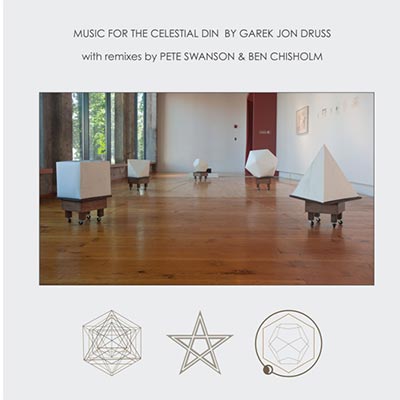 Ahhh, drone. The genre that is almost always at least somewhat cool by virtue of fucking with the time space perception of the listener. But how do you separate the wheat from the chaff when it comes to drone music? Answer: I have no fucking clue. What I do know, though, is that this is the most interesting drone release that found its way onto my computer this year, partially because of what makes it different. It starts out in typically elongated synth tone territory and eventually throws some tastefully delayed minimal beats into the picture, which slowly get mind-fuckingly tribal and then subside while the underlying drone remains. The next two songs are remixes of the initial track by other notable drone practitioners. Pete Swanson's pulsates in a hypnotic/robotic manner while Ben Chisholm's twists artificial string arrangements into various multi-dimensional cut-up configurations. All of this is sufficiently headtrippy. Yet another out there record from the Debacle imprint, which has become my local Seattle go-to when the hankering for something electronic and abnormal strikes my fancy. Extra props to 2014's Debacle Fest, which was the strangest and best-attended experimental shows I've been to in quite some time. If someone were to ask me what the common theme was with all the acts at the 2014 Debacle Fest, the only thing I could come up with would be: well, they were all fucking weird. No, really, that seemed to be the theme. Mad props.
Ahhh, drone. The genre that is almost always at least somewhat cool by virtue of fucking with the time space perception of the listener. But how do you separate the wheat from the chaff when it comes to drone music? Answer: I have no fucking clue. What I do know, though, is that this is the most interesting drone release that found its way onto my computer this year, partially because of what makes it different. It starts out in typically elongated synth tone territory and eventually throws some tastefully delayed minimal beats into the picture, which slowly get mind-fuckingly tribal and then subside while the underlying drone remains. The next two songs are remixes of the initial track by other notable drone practitioners. Pete Swanson's pulsates in a hypnotic/robotic manner while Ben Chisholm's twists artificial string arrangements into various multi-dimensional cut-up configurations. All of this is sufficiently headtrippy. Yet another out there record from the Debacle imprint, which has become my local Seattle go-to when the hankering for something electronic and abnormal strikes my fancy. Extra props to 2014's Debacle Fest, which was the strangest and best-attended experimental shows I've been to in quite some time. If someone were to ask me what the common theme was with all the acts at the 2014 Debacle Fest, the only thing I could come up with would be: well, they were all fucking weird. No, really, that seemed to be the theme. Mad props.  I've said it once, and I'll say it a million times; El-P basically ruined hip-hop for me back in 2002 when he dropped Fantastic Damage. It sounded roughly a decade ahead of its time both lyrically and production-wise and made all the bling rap bullshit surrounding it in the mainstream seem beyond embarrassing. As El rightfully declares on RTJ2, "Every bar of that bitch shit you spit is your fucking prison." Word. 2014 was the year that the mainstream finally caught up to Jaime Meline, and thank fucking god. It's incredibly appropriate that Rage Against the Machine's Zach De La Rocha guests here because this album often gives off the exact same vibes that made RATM so great back in the '90s: preaching about the inherent corruption of our economic system while simultaneously making your head nod uncontrollably. Just try and listen to RTJ2 (or "The Battle of Los Angeles", for that matter) without involuntarily popping your neck back and forth and raising your hand in a Black Panther gesture of solidarity. It's impossible. The saddest thing about Rage is that they broke up right before W. weaseled his way into office (i.e. at the exact moment we needed them most). The good news is the RTJ made the perfect protest album at the perfect time, which seemed almost prescient. The fact that they ended up in on tour in St. Louis on the very night the bullshit grand jury verdict for Darren Wilson was delivered is beyond synchronous.
I've said it once, and I'll say it a million times; El-P basically ruined hip-hop for me back in 2002 when he dropped Fantastic Damage. It sounded roughly a decade ahead of its time both lyrically and production-wise and made all the bling rap bullshit surrounding it in the mainstream seem beyond embarrassing. As El rightfully declares on RTJ2, "Every bar of that bitch shit you spit is your fucking prison." Word. 2014 was the year that the mainstream finally caught up to Jaime Meline, and thank fucking god. It's incredibly appropriate that Rage Against the Machine's Zach De La Rocha guests here because this album often gives off the exact same vibes that made RATM so great back in the '90s: preaching about the inherent corruption of our economic system while simultaneously making your head nod uncontrollably. Just try and listen to RTJ2 (or "The Battle of Los Angeles", for that matter) without involuntarily popping your neck back and forth and raising your hand in a Black Panther gesture of solidarity. It's impossible. The saddest thing about Rage is that they broke up right before W. weaseled his way into office (i.e. at the exact moment we needed them most). The good news is the RTJ made the perfect protest album at the perfect time, which seemed almost prescient. The fact that they ended up in on tour in St. Louis on the very night the bullshit grand jury verdict for Darren Wilson was delivered is beyond synchronous.  To tell you the truth, Earth's last few mellow albums were both an incredible execution of vision while simultaneously not being something I found myself wanting to spin very often. For longtime heroin addicts, I had to respect the effect they created, which was very much in tune with the psychoactive properties of that particular drug in that they gave you the auditory sensation of nodding off blissfully without any of the painful withdrawals. But therein lies the problem. After about the third time I put on The Bees Made Honey in the Lion's Skull and found myself falling asleep within 15 minutes, I had to resolve to not listen to it in any circumstances where I had to get anything done. It just isn't actually very often when I want to willfully fall asleep while listening to music.
To tell you the truth, Earth's last few mellow albums were both an incredible execution of vision while simultaneously not being something I found myself wanting to spin very often. For longtime heroin addicts, I had to respect the effect they created, which was very much in tune with the psychoactive properties of that particular drug in that they gave you the auditory sensation of nodding off blissfully without any of the painful withdrawals. But therein lies the problem. After about the third time I put on The Bees Made Honey in the Lion's Skull and found myself falling asleep within 15 minutes, I had to resolve to not listen to it in any circumstances where I had to get anything done. It just isn't actually very often when I want to willfully fall asleep while listening to music.  2014 will also go down as the year metal gods Mastodon released their finest album to date while simultaneously alienating half their fanbase. You know what I think Mastodon's second best album is? The Hunter. Me and the 'Don clearly have similar tastes, which I think could probably be best demonstrated by the unbelievably awesome album art they chose for this beast (Editor's Note: Created by the amazing Skinner; see our interview with him
2014 will also go down as the year metal gods Mastodon released their finest album to date while simultaneously alienating half their fanbase. You know what I think Mastodon's second best album is? The Hunter. Me and the 'Don clearly have similar tastes, which I think could probably be best demonstrated by the unbelievably awesome album art they chose for this beast (Editor's Note: Created by the amazing Skinner; see our interview with him  I can't believe I'm actually saying this, but the stoner and doom metal genres have gotten so saturated in the last decade that even I'm sort of getting to the point where I'm a bit bored with it all. Don't get me wrong; I'll gladly listen to even a run-of-the-mill doom or stoner metal band over pretty much anything considered "indie rock" in this day and age, but simultaneously, there's certainly a bit of undeniable stagnation going on in those scenes. Which is why Saiga is a breath of fresh air, as according to their Bandcamp page, their music "contains lots of genres, all of them stoned" -- which I have to admit is a pretty fair assessment. It's not like these dudes are reinventing the wheel with their weeded out instrumetal, but they do it with an undeniable verve lacking in most of what could be considered stoner rock these days.
I can't believe I'm actually saying this, but the stoner and doom metal genres have gotten so saturated in the last decade that even I'm sort of getting to the point where I'm a bit bored with it all. Don't get me wrong; I'll gladly listen to even a run-of-the-mill doom or stoner metal band over pretty much anything considered "indie rock" in this day and age, but simultaneously, there's certainly a bit of undeniable stagnation going on in those scenes. Which is why Saiga is a breath of fresh air, as according to their Bandcamp page, their music "contains lots of genres, all of them stoned" -- which I have to admit is a pretty fair assessment. It's not like these dudes are reinventing the wheel with their weeded out instrumetal, but they do it with an undeniable verve lacking in most of what could be considered stoner rock these days.  A lot of musicians these days cop an Occult pose as a marketing gimmick while lacking even a basic understanding of the actual concepts underlying the craft. Then there's acts like Radio Vril out of beautiful Battle Creek, Michigan, who not only make Occult art, but live the shit for real. It's funny because years before I ever started playing around with things like sex magick, my first explorations into hyper-liminal states of consciousness involved making super freaky sampler driven electro weirdness designed specifically to fuck with my own head. Radio Vril lives to explore these states with a devotion known by a rare few. As far as I can tell, the guy put out what, like 5 different albums this year? I couldn't even keep track of them all, but of the few I had time for, this was the most compelling.
A lot of musicians these days cop an Occult pose as a marketing gimmick while lacking even a basic understanding of the actual concepts underlying the craft. Then there's acts like Radio Vril out of beautiful Battle Creek, Michigan, who not only make Occult art, but live the shit for real. It's funny because years before I ever started playing around with things like sex magick, my first explorations into hyper-liminal states of consciousness involved making super freaky sampler driven electro weirdness designed specifically to fuck with my own head. Radio Vril lives to explore these states with a devotion known by a rare few. As far as I can tell, the guy put out what, like 5 different albums this year? I couldn't even keep track of them all, but of the few I had time for, this was the most compelling. 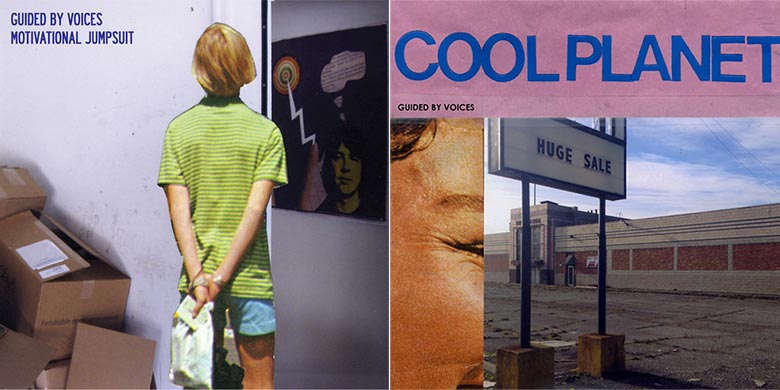
 Seven That Spells is a band that I don't honestly know that much about other than that they're simultaneously amazing, from Croatia, and describe themselves by saying shit like:
Seven That Spells is a band that I don't honestly know that much about other than that they're simultaneously amazing, from Croatia, and describe themselves by saying shit like:
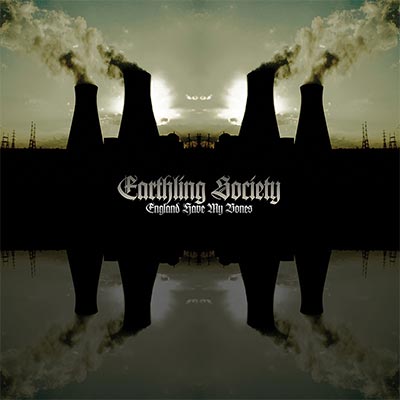 Any band that starts off an album with an 11-minute track named after a channeled discarnate entity (Aiwass) is going to win points with me. A band that starts off an album with a track named after a freaky discarnate entity that actually sounds like something you'd play to summon a freaky discarnate entity is going to end up being one of my faves of the year, no problem. England's Earthling Society: yet another band who have apparently put out a ton of records and been around for over a decade that I'm just now catching on to. I can't speak for their entire discography, but this album is all kinds of awesome. It's not really much more than prototypical neo psych jam band stuff, but thankfully, they don't skimp on things like Sonic Youth-style noise guitar blasts and overly affected vocals. The thing that's really odd about this album actually is that while being mainly in the background and indecipherable, the vocals really do add an atmospheric layer of import to the package that elevates it to the higher stratospheres of pleasantly disorienting. A lot of variety, too. No two tracks truly sound that much alike, but they all go on forever and give off the exact vibes of ritualistic higher dimensional spirit summoning. If you were to say, set aside a day to take massive amounts of hallucinogens in an attempt to make contact with your holy guardian alien, this album will get you about as close as it gets.
Any band that starts off an album with an 11-minute track named after a channeled discarnate entity (Aiwass) is going to win points with me. A band that starts off an album with a track named after a freaky discarnate entity that actually sounds like something you'd play to summon a freaky discarnate entity is going to end up being one of my faves of the year, no problem. England's Earthling Society: yet another band who have apparently put out a ton of records and been around for over a decade that I'm just now catching on to. I can't speak for their entire discography, but this album is all kinds of awesome. It's not really much more than prototypical neo psych jam band stuff, but thankfully, they don't skimp on things like Sonic Youth-style noise guitar blasts and overly affected vocals. The thing that's really odd about this album actually is that while being mainly in the background and indecipherable, the vocals really do add an atmospheric layer of import to the package that elevates it to the higher stratospheres of pleasantly disorienting. A lot of variety, too. No two tracks truly sound that much alike, but they all go on forever and give off the exact vibes of ritualistic higher dimensional spirit summoning. If you were to say, set aside a day to take massive amounts of hallucinogens in an attempt to make contact with your holy guardian alien, this album will get you about as close as it gets. 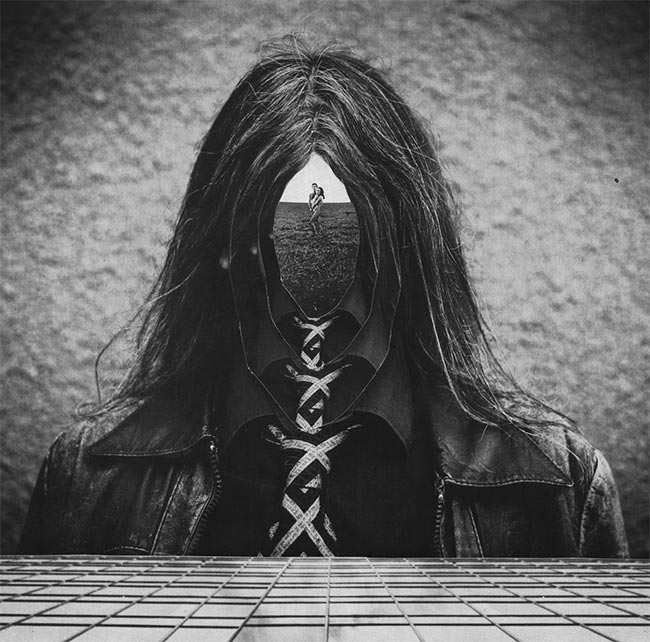 I actually tried to structure this list so the super freakiest albums got extra pull in the ratings, which is why you're finding this at number 2. Some bands dabble in psychedelia; acts like Anthroprophh go all in. Shit takes things to an entirely new level of flagrantly bananas. Songs start up in garage rock sputters and quickly head Hawkwind inner spaceward, just to vanish as soon as they started in an echoing vaporized puff of smoke, delicious smoke. New structures warp into your headspace replacing them, this time in extended bleats of deliciously over the top pulsating noise. All vocals are run through way more FX pedals than normal people would ever consider tasteful and end up sounding like Captain Beefheart from the year 3000. Guitars crackle and yelp in possessed wah solos from the other side. Is that some sort of backwards masked EVP radio interlude tying the hooks together? Yep.
I actually tried to structure this list so the super freakiest albums got extra pull in the ratings, which is why you're finding this at number 2. Some bands dabble in psychedelia; acts like Anthroprophh go all in. Shit takes things to an entirely new level of flagrantly bananas. Songs start up in garage rock sputters and quickly head Hawkwind inner spaceward, just to vanish as soon as they started in an echoing vaporized puff of smoke, delicious smoke. New structures warp into your headspace replacing them, this time in extended bleats of deliciously over the top pulsating noise. All vocals are run through way more FX pedals than normal people would ever consider tasteful and end up sounding like Captain Beefheart from the year 3000. Guitars crackle and yelp in possessed wah solos from the other side. Is that some sort of backwards masked EVP radio interlude tying the hooks together? Yep. Remember when people were getting all excited about that new Daft Punk album and I was like, what, that mediocre group from the '90s? Then people were freaking out about the new Aphex Twin, and don't get me wrong, I love the Richard D. James album and the Selective Ambient Works stuff as much as the next guy, but I also have a few other albums by him that are passable at best. Haven't even picked up Syro yet because of that. On the other hand, the one electronic act from the '90s that I hold in almost godlike regard is The Future Sound of London. Seriously, if you like psychedelic music of any variety and don't own the "holy trinity" of FSOL albums that is Lifeforms, ISDN, and Dead Cities, just go download those now. No really. Absolute freaking classics. Untouchable stuff.
Remember when people were getting all excited about that new Daft Punk album and I was like, what, that mediocre group from the '90s? Then people were freaking out about the new Aphex Twin, and don't get me wrong, I love the Richard D. James album and the Selective Ambient Works stuff as much as the next guy, but I also have a few other albums by him that are passable at best. Haven't even picked up Syro yet because of that. On the other hand, the one electronic act from the '90s that I hold in almost godlike regard is The Future Sound of London. Seriously, if you like psychedelic music of any variety and don't own the "holy trinity" of FSOL albums that is Lifeforms, ISDN, and Dead Cities, just go download those now. No really. Absolute freaking classics. Untouchable stuff.